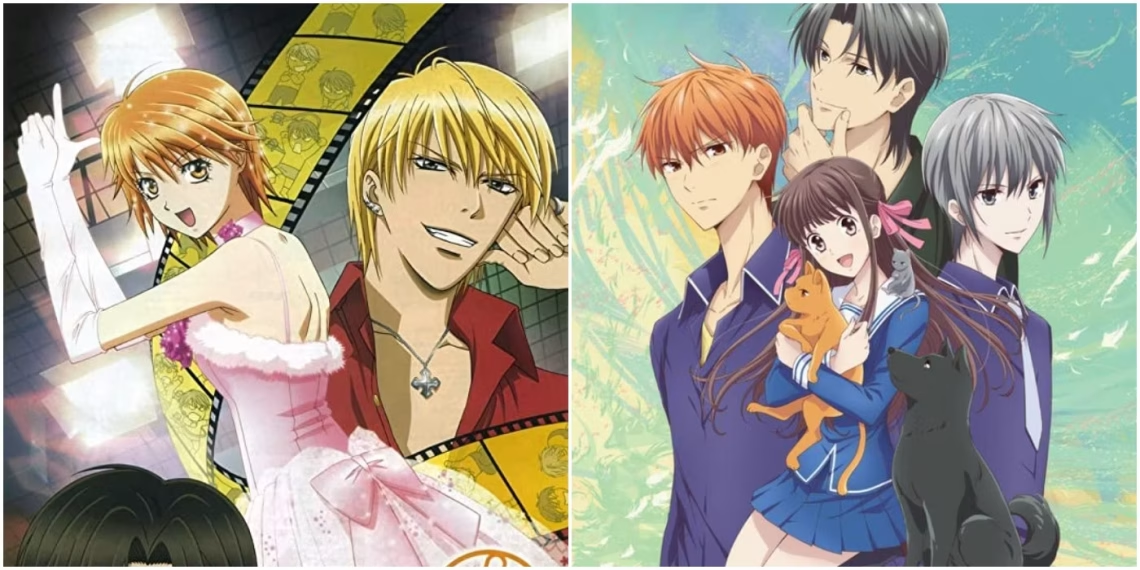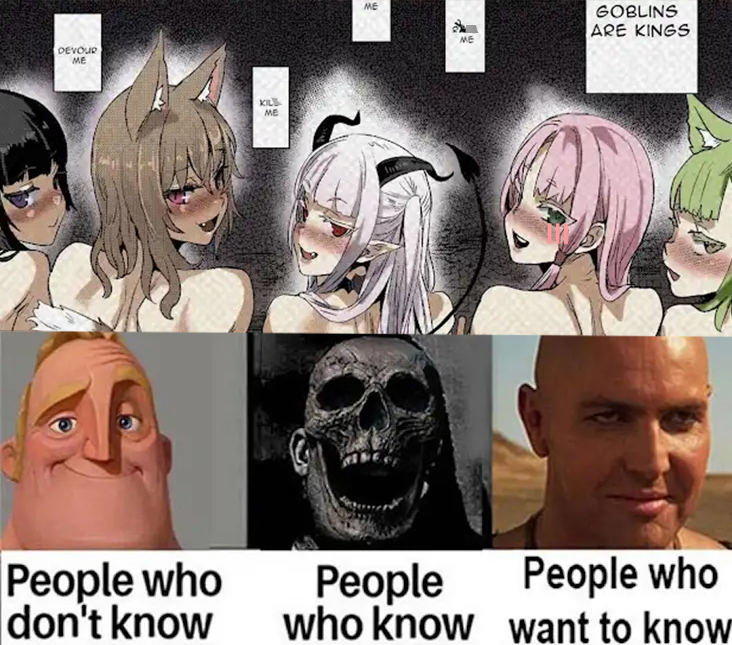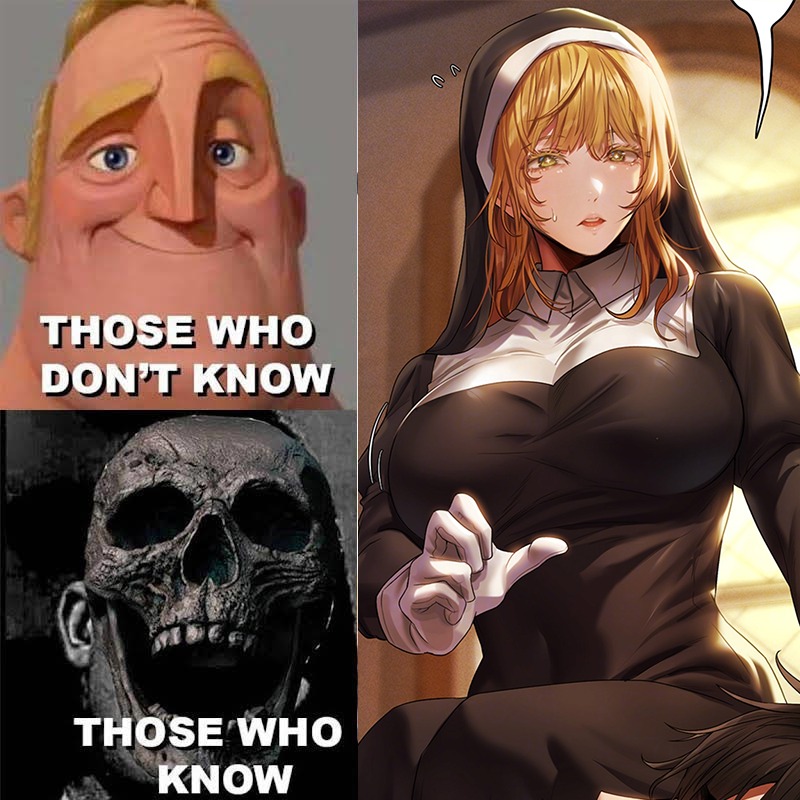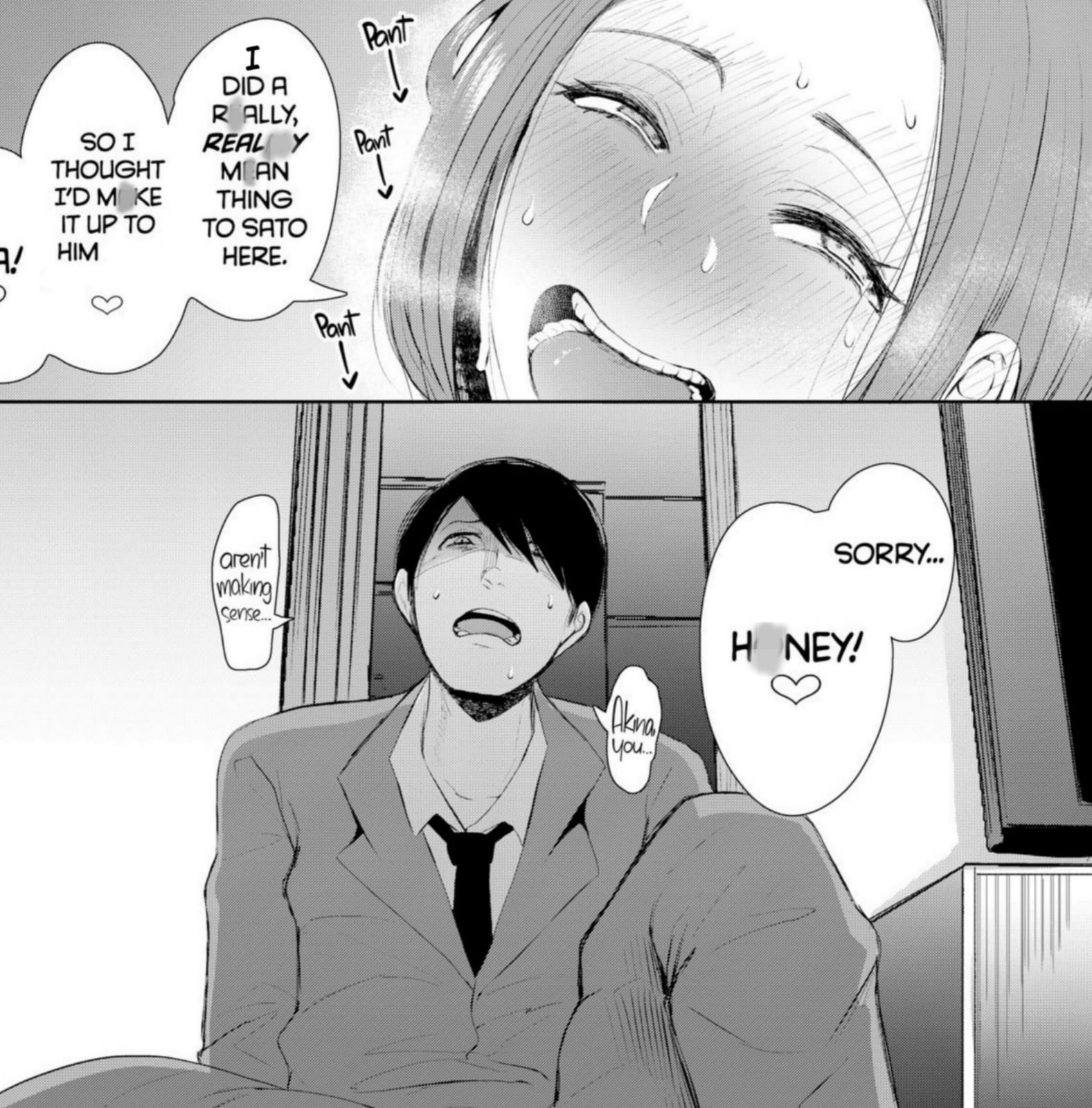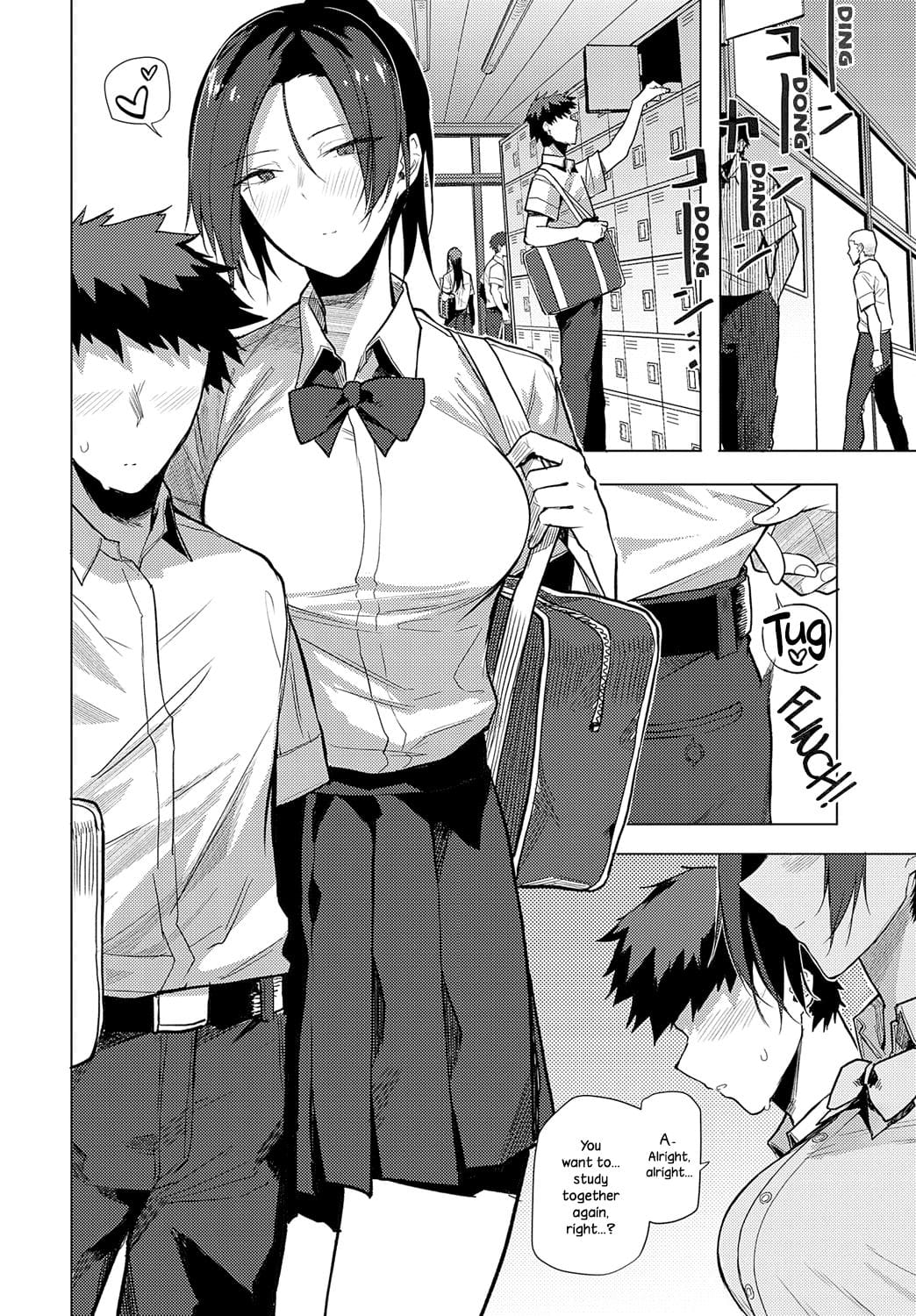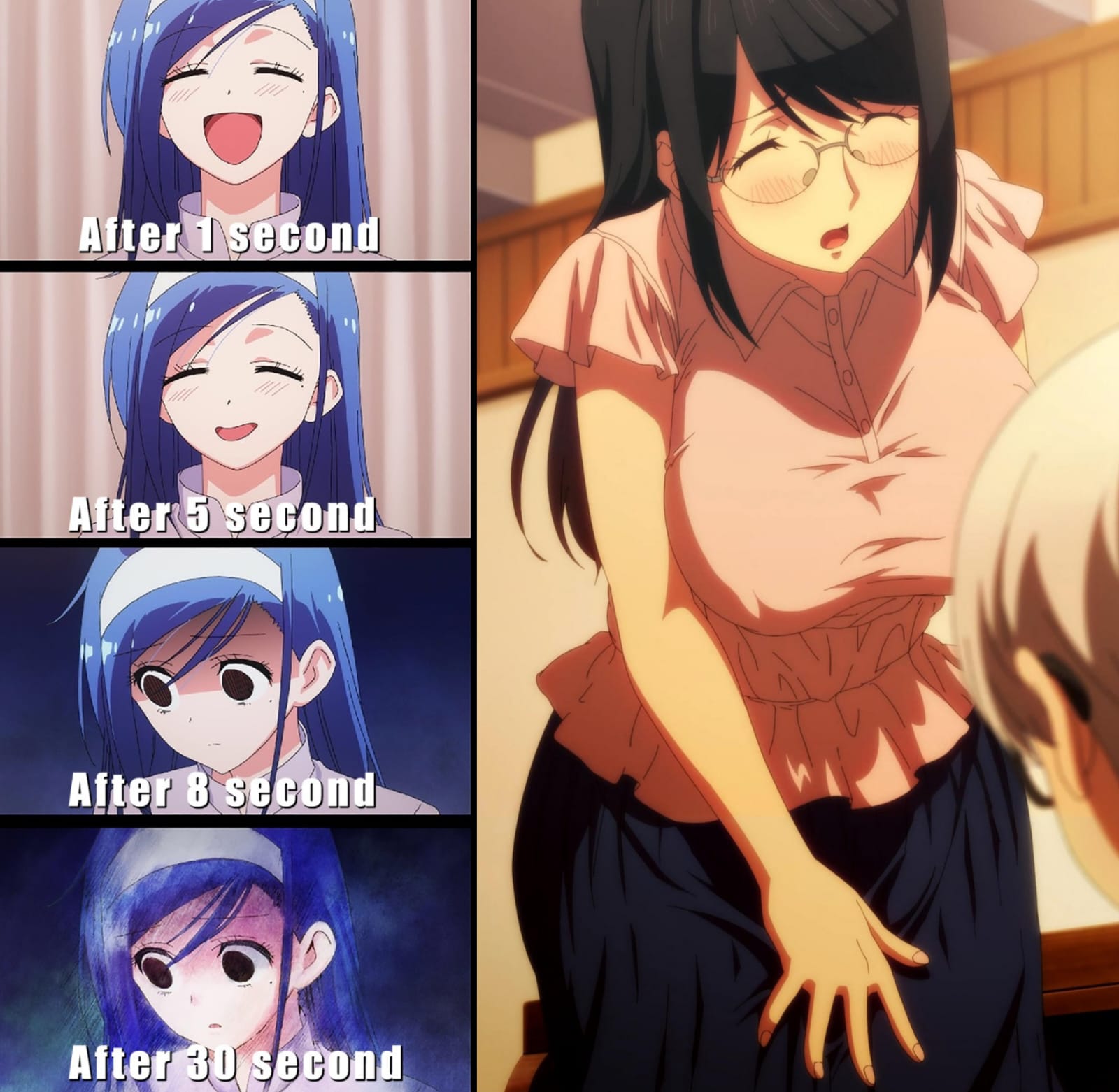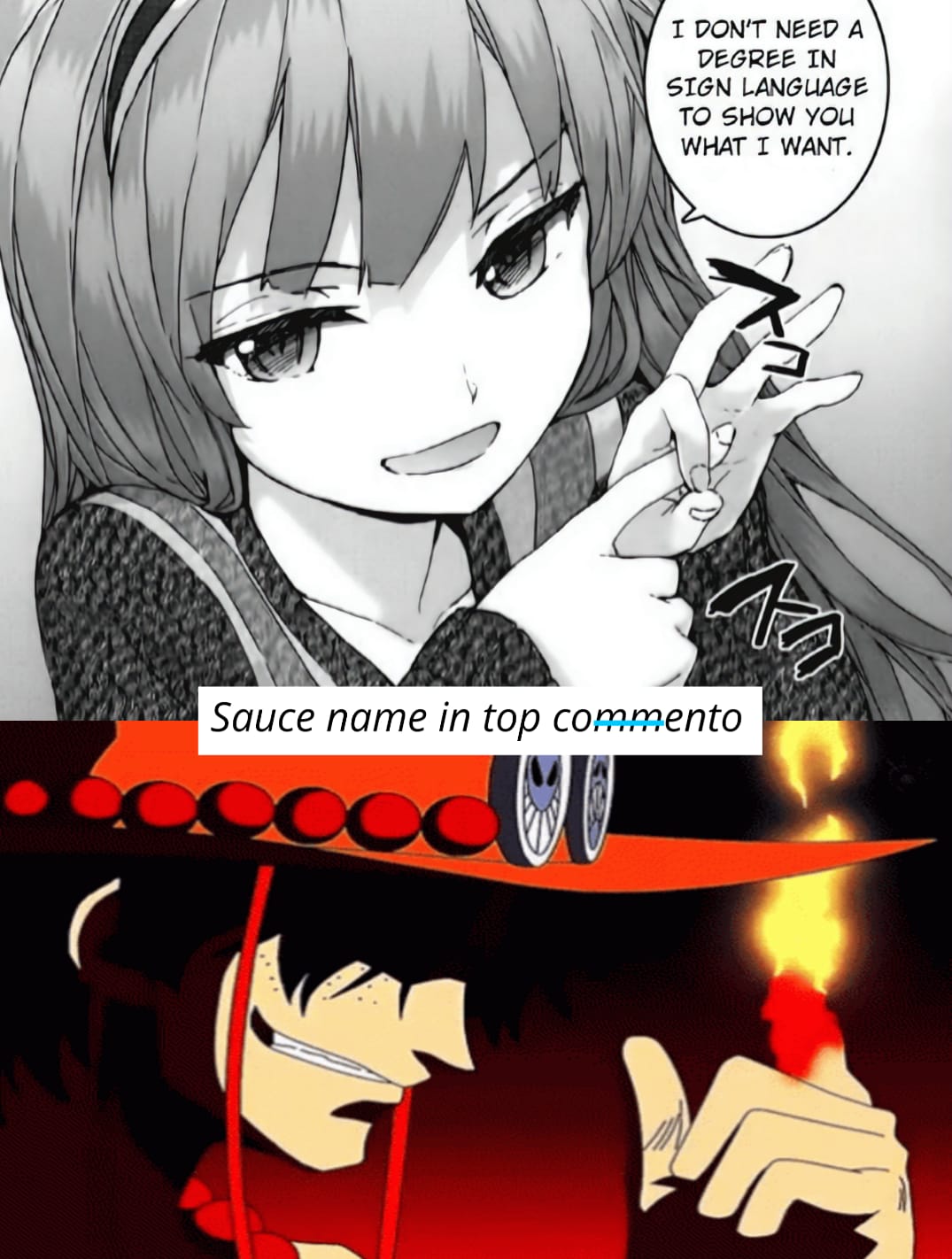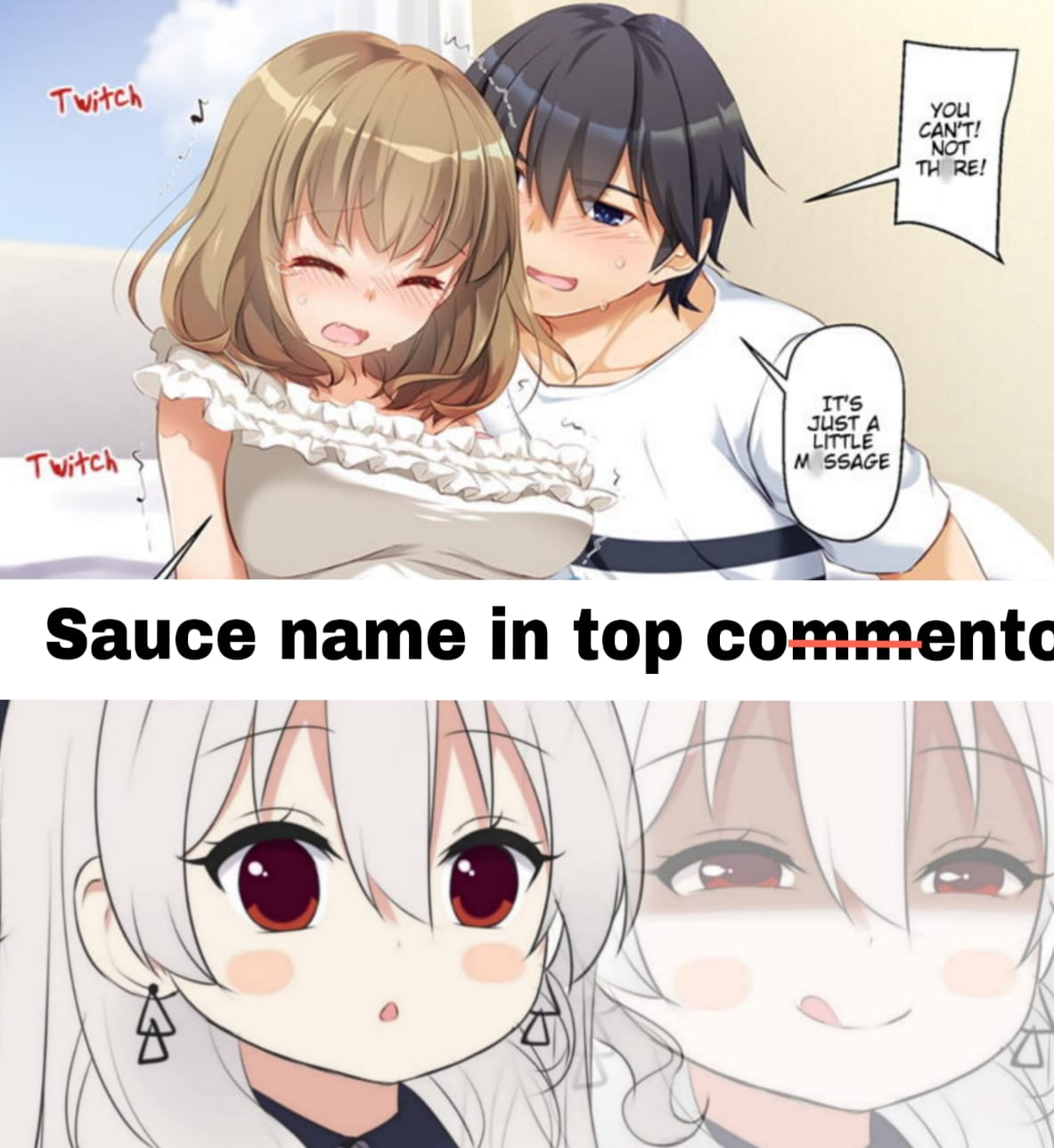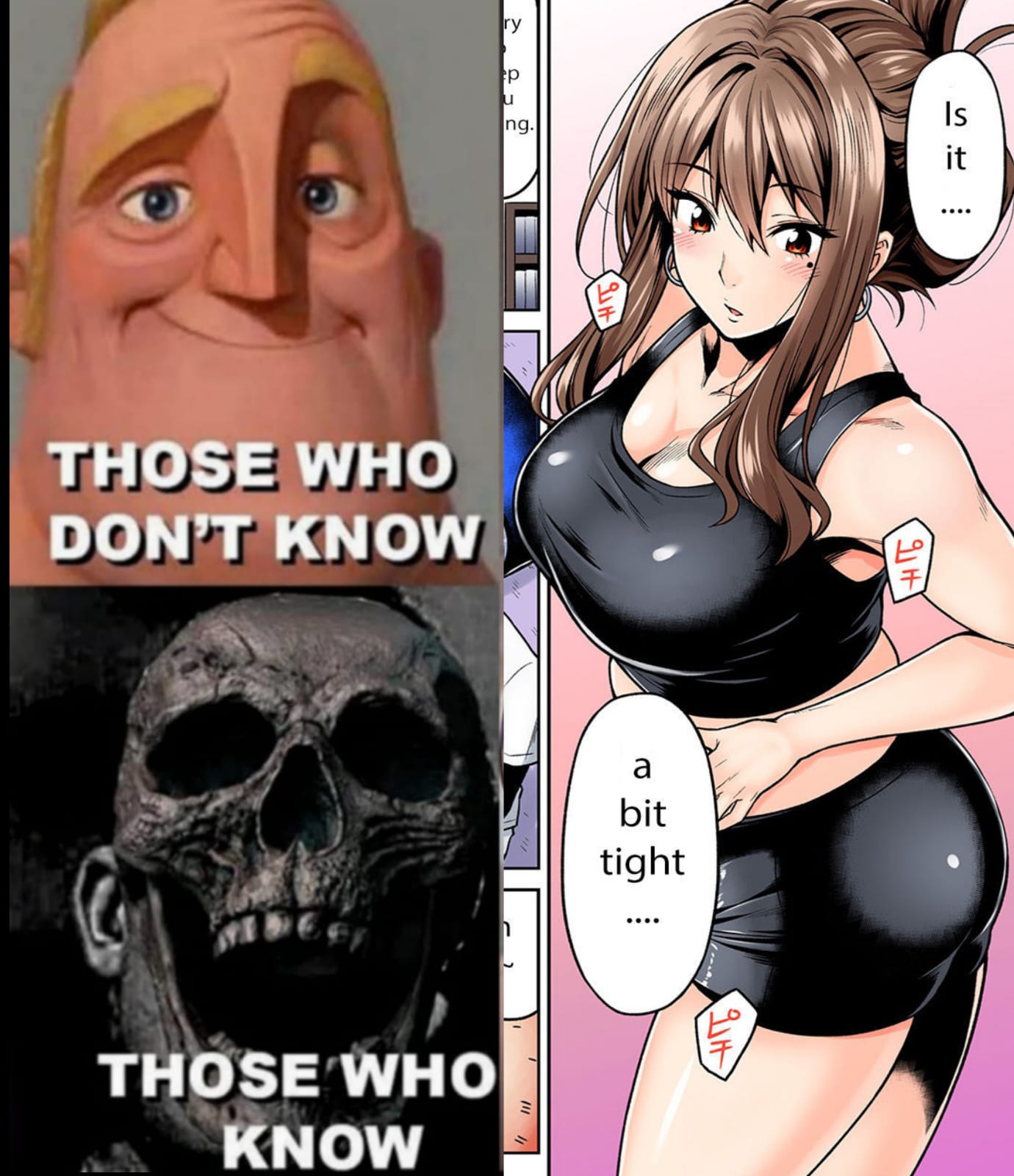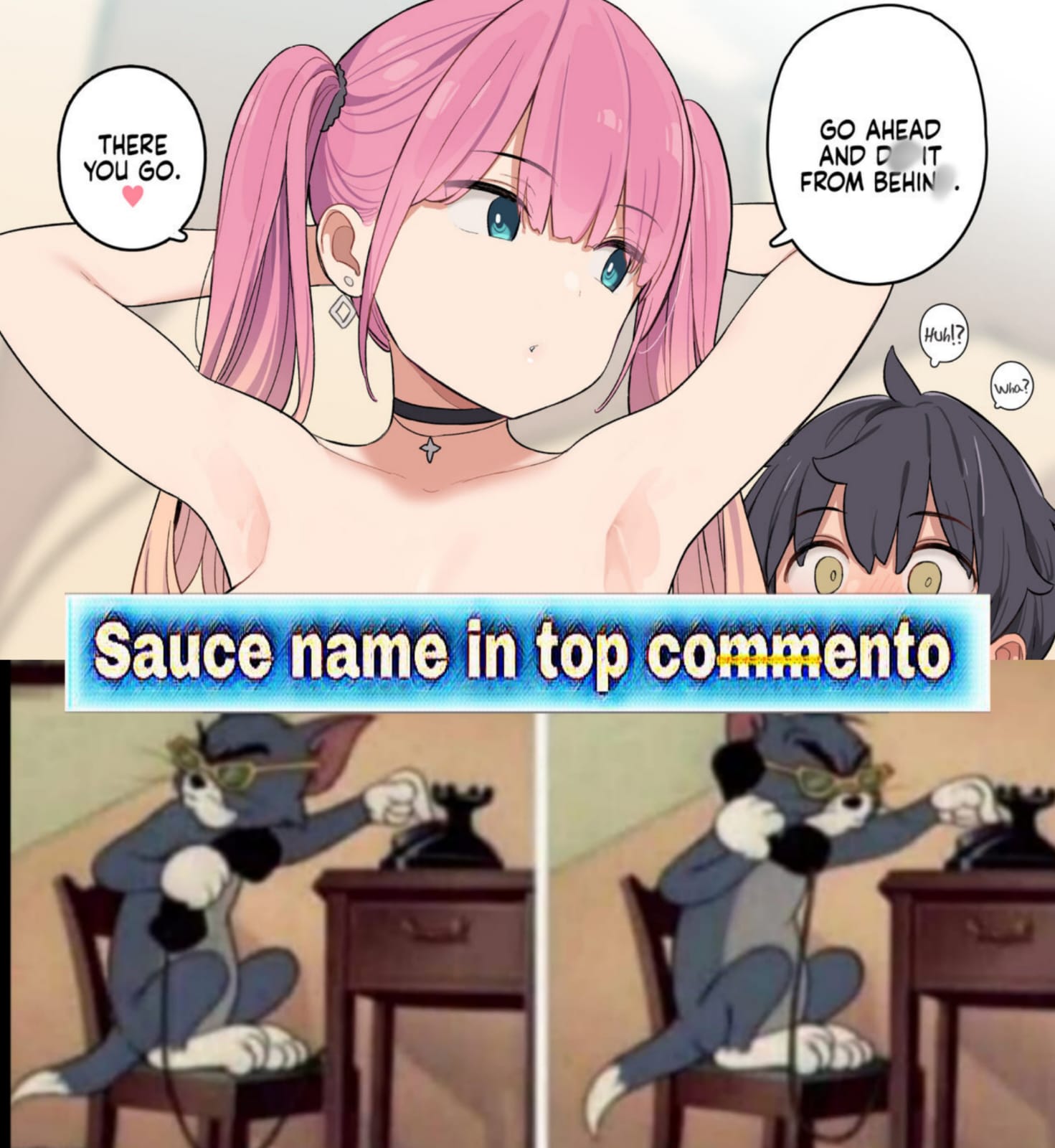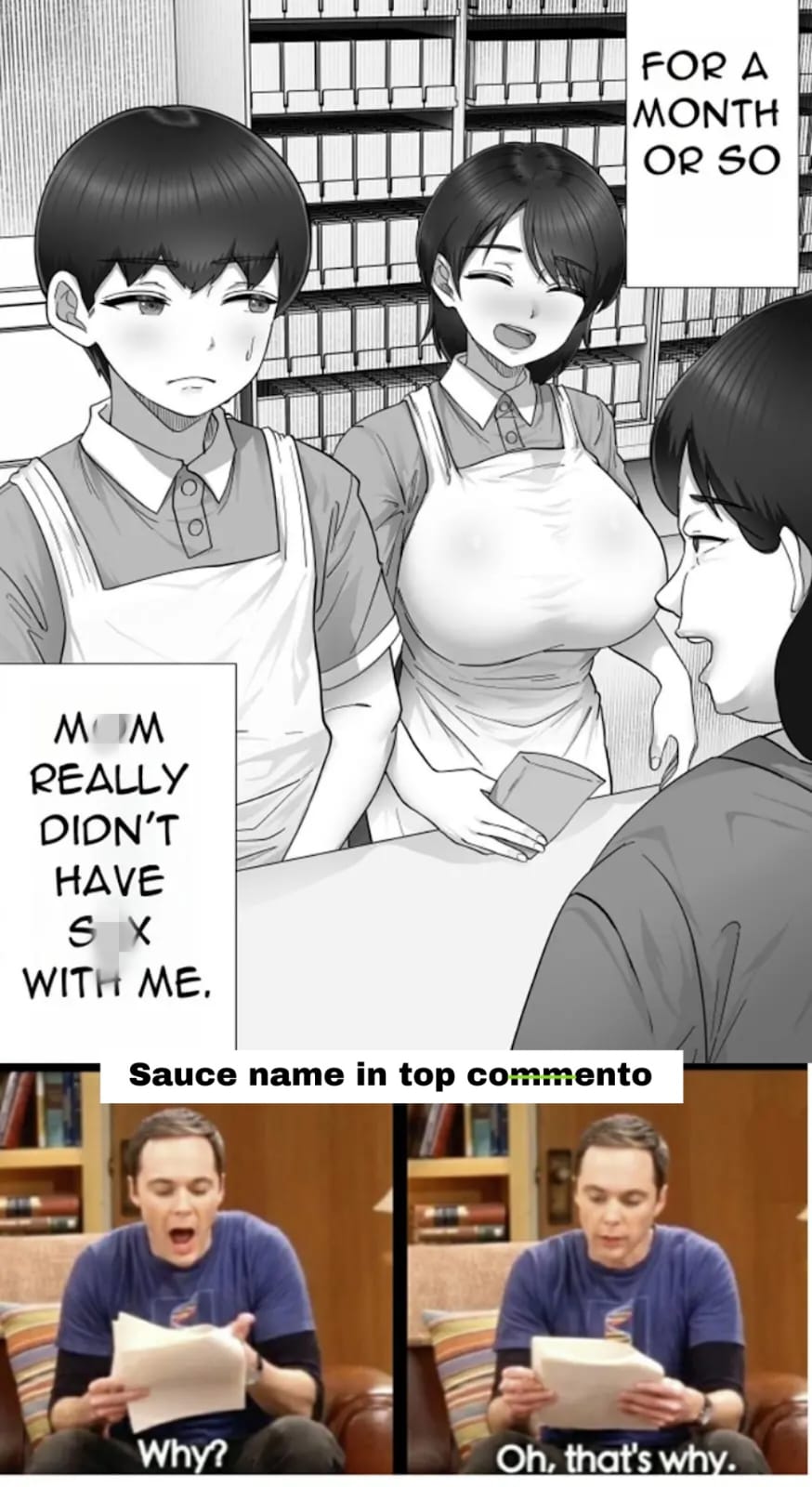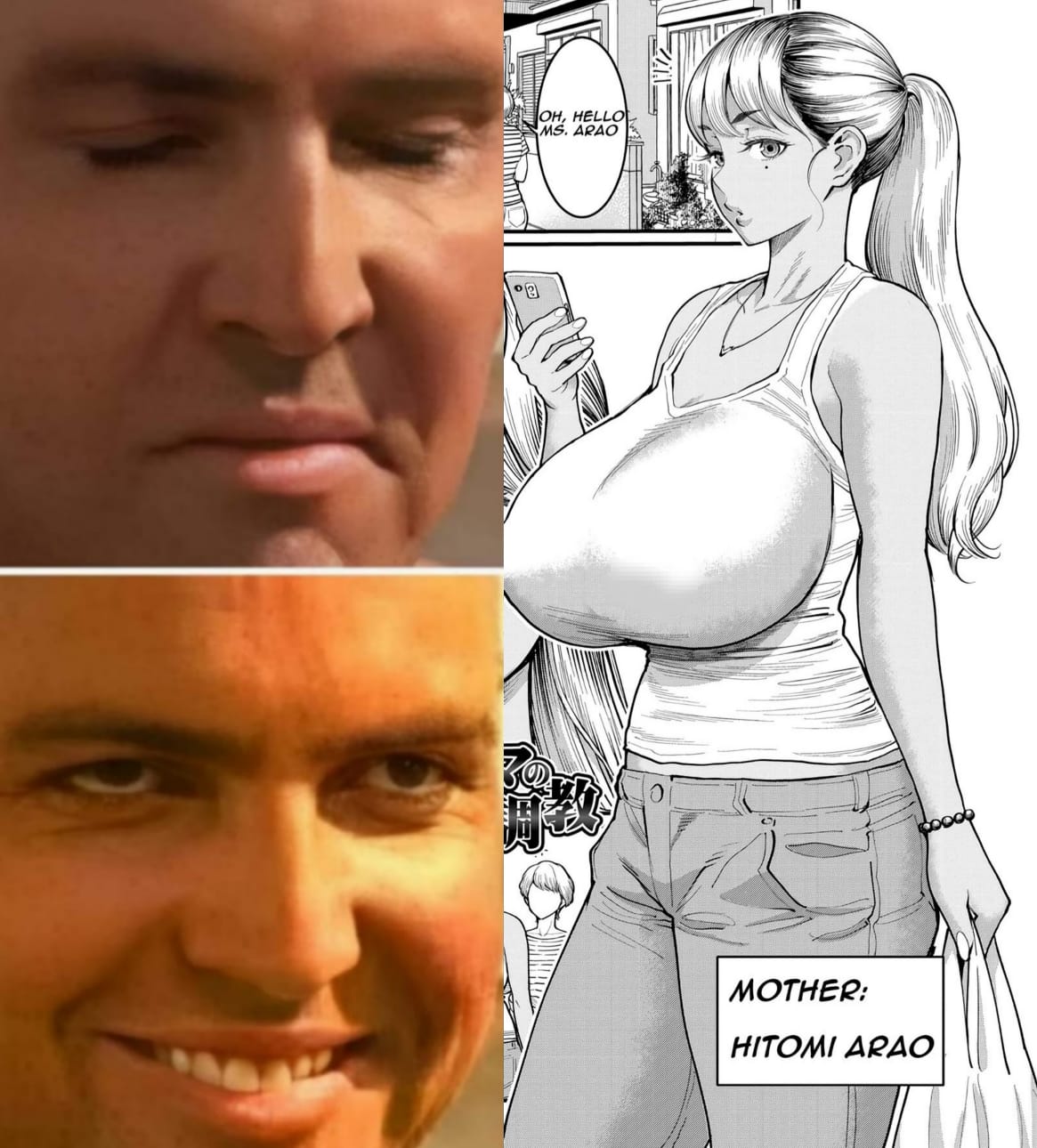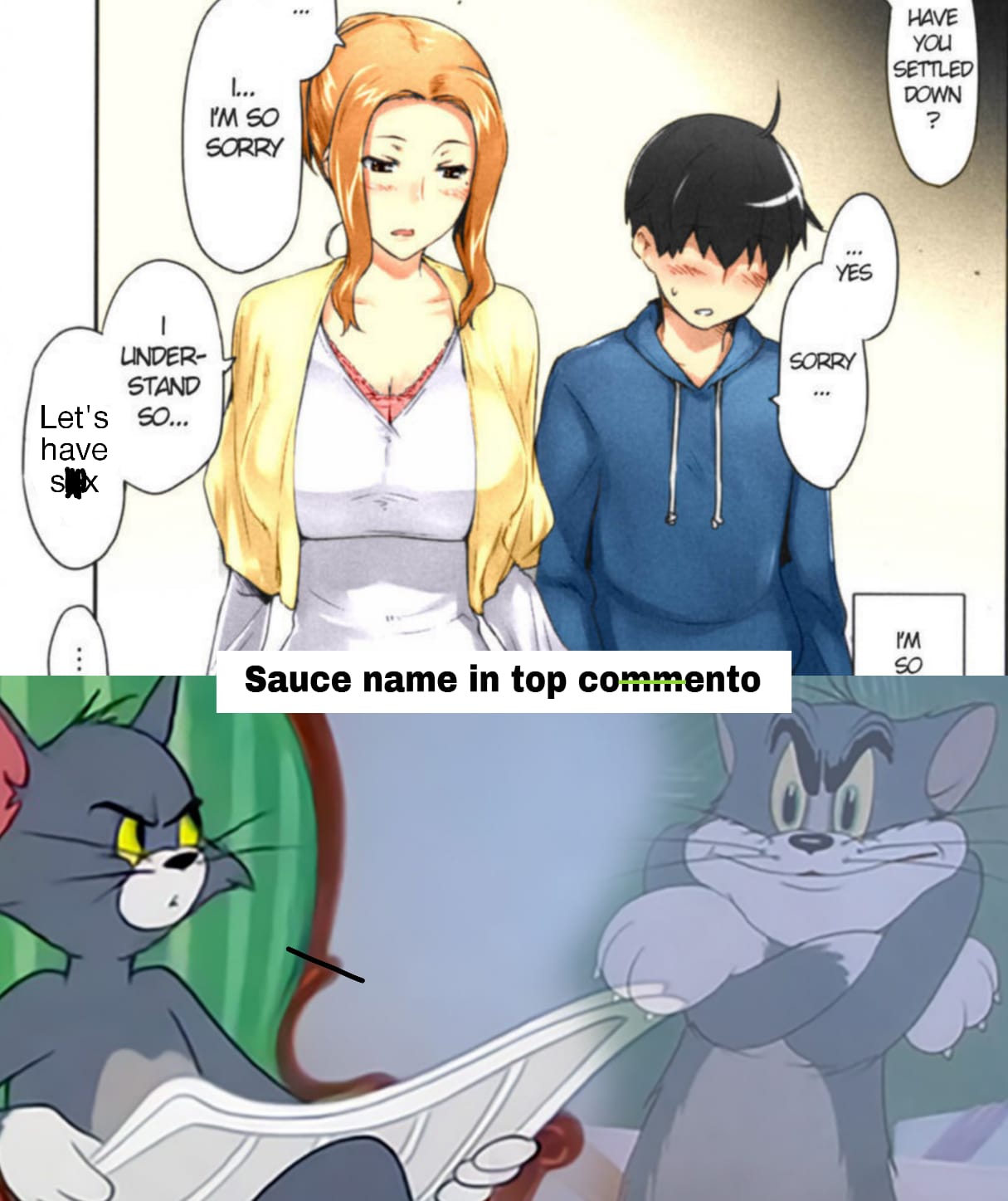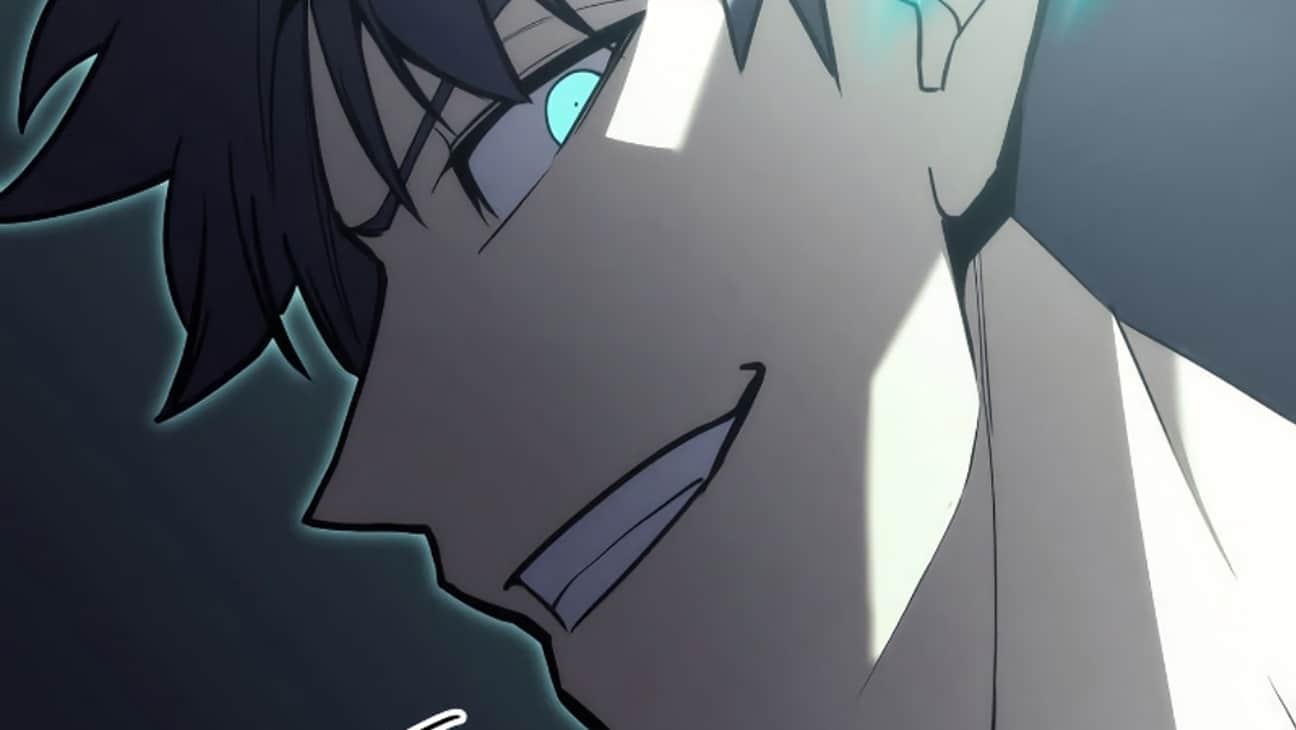While Western anime fans may know more famous shonen shows, shojo series are still very popular around the world. Shojo anime usually targets younger female audiences, but they can have amazing stories that anyone, regardless of age or gender, can enjoy.
Although some of the best shojo anime are typical romantic stories, many break the mold by exploring deeper emotional stories and unique themes. These shows highlight the best parts of the genre and deserve to be watched by most anime fans.
Spring 2024 is already underway, and the season has shown little interest in catering to the shojo market. Still, there are a few currently airing options for the demographic.
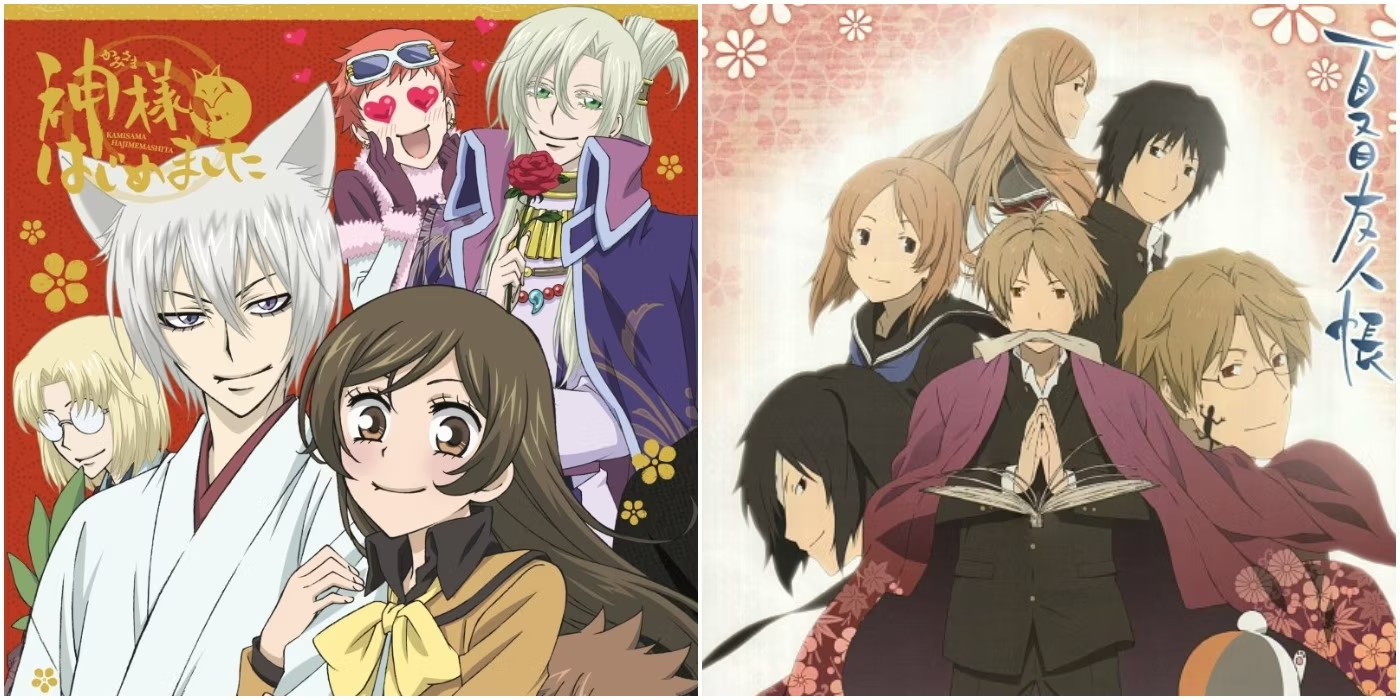
Spring 2024 has arrived, bringing an impressive and varied lineup of shows. Unsurprisingly, shonen has many big names thanks to sequels like Black Butler, My Hero Academia, and Demon Slayer, along with newcomers like Kaiju No. 8, Go! Go! Loser Ranger, and Mission: Yozakura Family.
Seinen representatives are not as plentiful, although Bartender: Glass of God and The Fable have been decent so far. Delicious in Dungeon is also airing its second course. As always, Spring 2024’s shojo anime are in short supply, with only two series representing the demographic. Neither show seems to be fantastic, but they both have things to offer.
10. Love Complex

Love Complex injects a refreshing twist into the classic Shoujo plotline. Departing from the typical portrayal of a slender, delicate heroine, we have the spirited and taller-than-average Risa Koizumi, who fearlessly proclaims her love for all to hear.
Rather than pining for the typical heartthrob, Risa’s affections are directed towards the uniquely short-statured Atsushi Otani.
The dynamic between Risa and Otani is what sets this shoujo anime apart, as their playful antics and humorous interactions elevate it to standout comedy status. Beneath the surface of their boisterous banter and comical expressions lies a heartwarming modern romance that forms the core of the narrative.
“Love Com” (short for Love*Com) is a delightful romantic comedy manga series written and illustrated by Aya Nakahara. It was serialized in the Bessatsu Margaret magazine from 2001 to 2006 and compiled into 17 tankōbon volumes by Shueisha.
The series gained significant popularity both in Japan and internationally for its charming characters, hilarious antics, and heartfelt romance.
The story follows the lives of Risa Koizumi and Atsushi Otani, two high school students who struggle with their heights. Risa, being 172 cm (5’8″), is taller than the average girl, while Otani, at 156 cm (5’1″), is shorter than the average guy. Due to their peculiar heights, they often become the subject of teasing and jokes.
Despite their physical differences, Risa and Otani share a deep friendship and develop a unique bond. They become inseparable friends, often bickering and bantering with each other.
However, as they spend more time together, they start to notice and appreciate each other’s qualities. Risa finds herself developing romantic feelings for Otani, but there’s a problem—Otani has a crush on another girl.
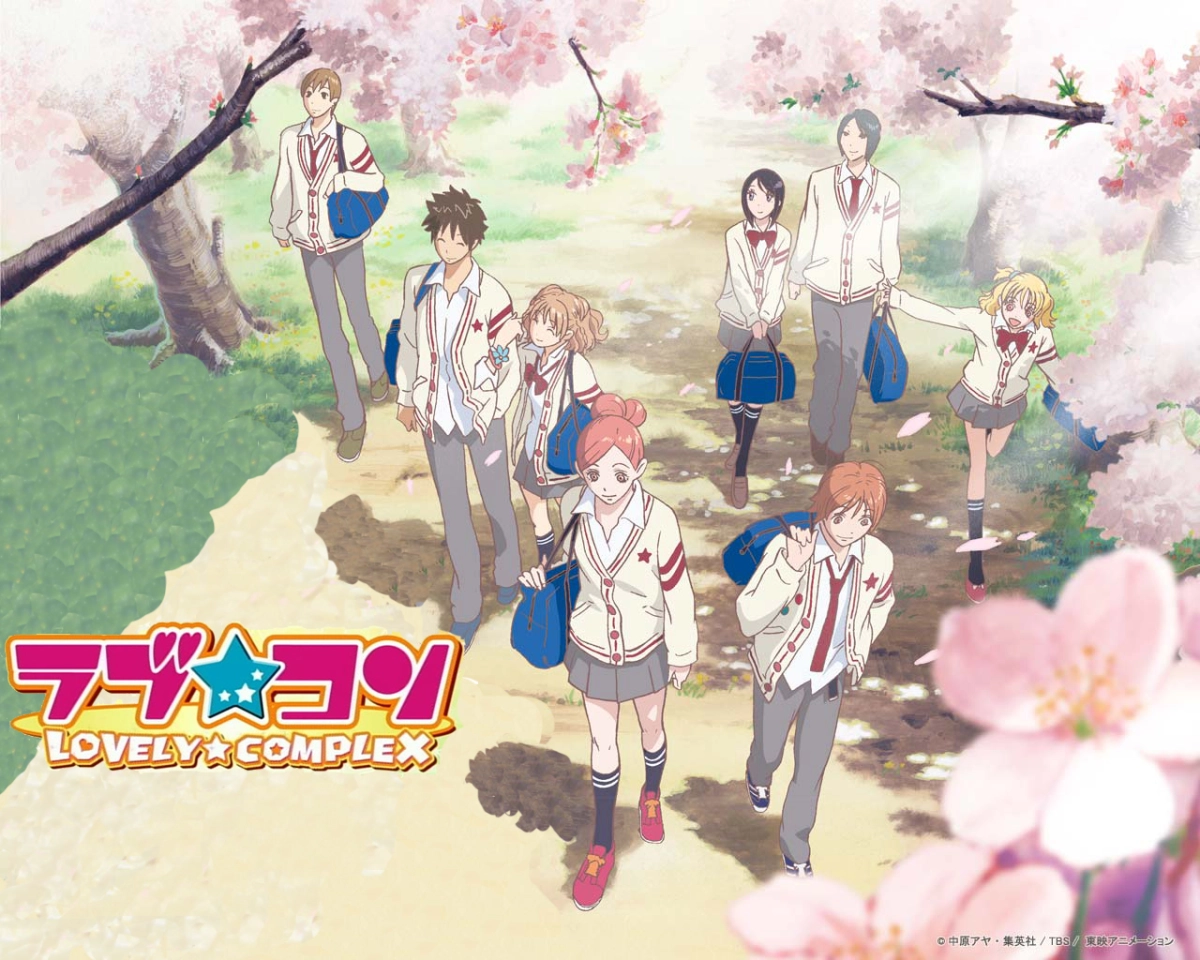
The manga follows Risa’s attempts to win Otani’s heart, while Otani remains oblivious to Risa’s feelings. Along the way, the story navigates through the complexities of teenage romance, friendship, self-discovery, and acceptance. The characters grow emotionally as they confront their insecurities and learn valuable life lessons.
One of the manga’s greatest strengths lies in its well-developed characters. Risa Koizumi is a spirited and confident girl who embraces her height despite the societal expectations.
She’s outspoken, energetic, and possesses a refreshing honesty. Atsushi Otani, on the other hand, is laid-back, humorous, and sometimes clueless about matters of the heart. Their contrasting personalities create humorous situations and heartwarming moments.
The supporting characters are also memorable, each adding depth to the story. Nobuko Ishihara and Nakao are Risa’s and Otani’s close friends, respectively, who provide comic relief and emotional support. The characters’ interactions feel genuine, and readers can easily relate to their struggles and triumphs.
Aya Nakahara’s art style is distinctive and suits the tone of the story perfectly. The character designs are expressive, and Nakahara excels in capturing emotions through facial expressions and body language. The comedic scenes are visually entertaining, and the romantic moments are depicted with sensitivity.
At its core, Love Com explores themes of self-acceptance, friendship, and the complexities of love. Risa’s journey towards self-love despite societal pressures is inspiring. The manga also portrays the importance of communication in relationships and the beauty of accepting oneself and others as they are.
Love Com received widespread acclaim for its humor, relatable characters, and heartfelt storytelling. It won the 49th Shogakukan Manga Award for the shōjo category in 2004, further solidifying its popularity. The manga’s success led to the release of a live-action film in 2006 and an anime adaptation produced by Toei Animation.
Fans appreciate Love Com for its ability to balance comedy with poignant emotional moments. The chemistry between Risa and Otani is endearing, and readers find themselves rooting for their relationship. The manga’s exploration of friendship and romantic dynamics resonates with audiences of all ages.
Love Com is a must-read for fans of romantic comedies. Its engaging storyline, lovable characters, and heartfelt messages make it a standout in the genre.
Whether you’re a seasoned manga enthusiast or new to the medium, Love Com offers a delightful and memorable reading experience that will leave you smiling and reflecting on the joys and challenges of love and friendship.
9. Cardcaptor Sakura

Cardcaptor Sakura seamlessly translates the playful essence of CLAMP manga into an anime format, sprinkled with a delightful twist. Similar to Sailor Moon, our protagonist finds herself thrust into an immense, world-altering responsibility by chance, gradually evolving to embrace her newfound role.
Sakura Kinomoto navigates the complexities of her double life, juggling the typical trials of a fourth-grader, including a crush on her brother’s best friend, alongside the monumental task of capturing the Clow Cards that escape from a magical tome hidden in her basement.
The series masterfully blends slice-of-life moments, looking into themes of childhood crushes and insecurities, with heart-pounding showdowns against formidable foes.
Through 70 heartwarming episodes, viewers witness Sakura’s transformation from a wide-eyed youngster to a confident, adept sorceress. Cardcaptor Sakura not only fascinated audiences with its endearing optimism but also served as a gateway into the enchanting world of shoujo anime and manga, thanks to its irresistible charm and kawaii aesthetic.
“Cardcaptor Sakura” is a renowned magical girl manga series created by the talented team of CLAMP, which consists of four female manga artists—Satsuki Igarashi, Ageha Ohkawa, Tsubaki Nekoi, and Mokona.
The series was serialized in Nakayoshi magazine from 1996 to 2000 and collected into 12 tankōbon volumes by Kodansha. “Cardcaptor Sakura” quickly became a beloved classic due to its nice story, enchanting characters, and beautiful artwork.
The story follows Sakura Kinomoto, an elementary school student who accidentally releases a set of magical cards known as the Clow Cards. Each card has its own unique power, and their release causes chaos in Sakura’s hometown of Tomoeda. Keroberos, the guardian beast of the cards, appoints Sakura as the Cardcaptor, tasking her with retrieving the cards and preventing them from wreaking havoc.
With the help of her best friend Tomoyo Daidouji, who designs Sakura’s battle costumes, and her rival-turned-ally Syaoran Li, Sakura gets on a quest to capture all the Clow Cards. Along the way, Sakura faces various challenges, encounters new allies and adversaries, and learns about the responsibilities of being a Cardcaptor.
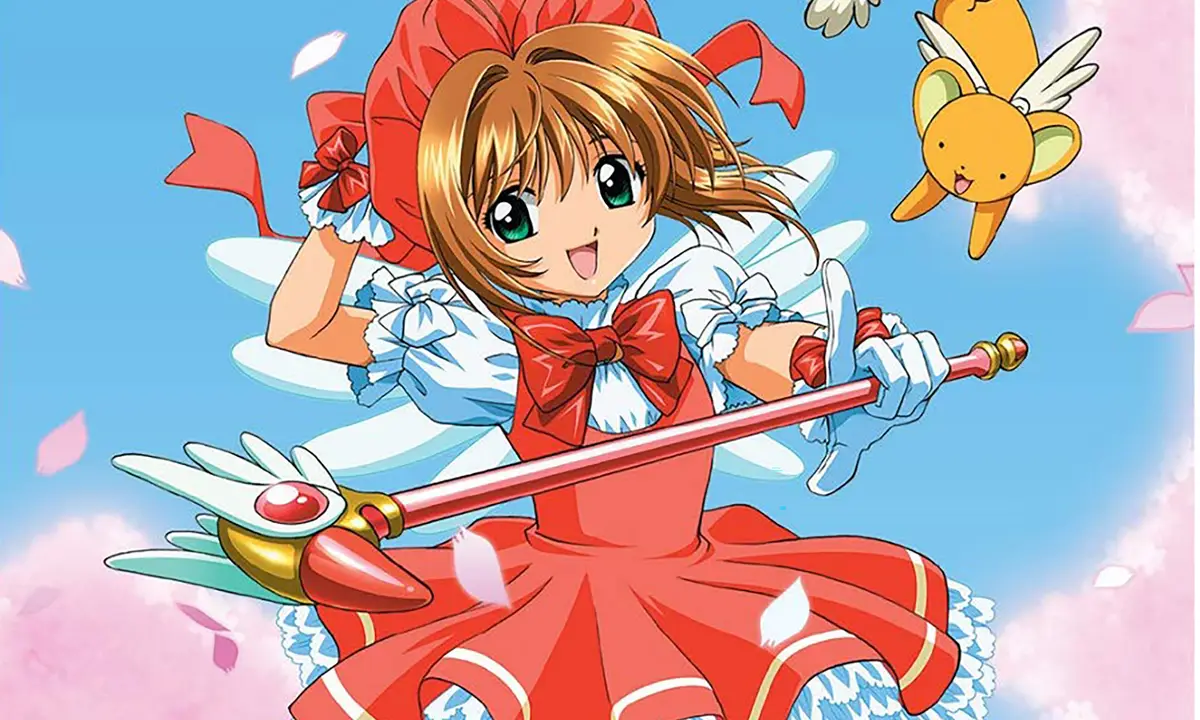
As the story progresses, Sakura’s adventures deepen her understanding of herself, her relationships with others, and the nature of magic. She also develops feelings for Syaoran, adding a touching romantic subplot to the narrative.
“Cardcaptor Sakura” excels in character development, presenting a diverse and lovable cast. Sakura Kinomoto is depicted as kind-hearted, optimistic, and determined—a heroine who always puts others before herself. Her growth from a novice Cardcaptor to a confident and skilled magician is portrayed convincingly throughout the series.
Syaoran Li initially appears as a competitive rival to Sakura, but he gradually becomes her ally and eventual love interest. His character arc involves personal growth, as he learns to respect Sakura and value her abilities. Tomoyo Daidouji is Sakura’s supportive and creative friend, known for her affectionate admiration of Sakura and her talent for making elegant costumes.
The supporting characters, including Sakura’s older brother Toya, her friend Yukito, and the enigmatic Eriol, contribute to the richness of the story, each with their own unique personalities and roles.
CLAMP’s artwork in “Cardcaptor Sakura” is visually stunning, characterized by detailed illustrations, expressive character designs, and intricate magical sequences.
The manga features beautiful costume designs for Sakura’s various outfits, each enhancing the magical atmosphere of the story. CLAMP’s ability to convey emotions through their art style adds depth to the characters and their interactions.
At its core, “Cardcaptor Sakura” explores themes of friendship, love, courage, and personal growth. Sakura’s journey as a Cardcaptor teaches her important life lessons about responsibility, empathy, and the value of maintaining meaningful connections with others. The series emphasizes the importance of kindness and compassion in overcoming challenges.
“Cardcaptor Sakura” received widespread critical acclaim and gained a dedicated fan base worldwide. Its compelling storyline, well-developed characters, and enchanting artwork contributed to its success. The series has been adapted into several anime seasons, movies, and spin-off manga, further expanding its popularity.
Fans appreciate “Cardcaptor Sakura” for its engaging plot, memorable characters, and emotional depth. The romantic elements between Sakura and Syaoran are particularly cherished by audiences. The series has left a lasting impact on the magical girl genre and continues to be celebrated as a classic in manga and anime.
Cardcaptor Sakura” is a timeless masterpiece that appeals to readers of all ages. Its enchanting blend of magic, adventure, and heartfelt storytelling makes it a must-read for manga enthusiasts.
Whether you’re grabbed by Sakura’s magical escapades or touched by the themes of friendship and love, “Cardcaptor Sakura” promises an unforgettable and magical journey.
8. My Little Monster

In the shoujo anime, few protagonists embody studious dedication and seriousness quite like Shizuku Mizutani from My Little Monster. Her entire focus revolves around academic excellence until a simple task—to deliver printouts to the socially ostracized Haru Yoshida—sets off a chain of events.
Initially perceived as a violent troublemaker by her peers, Haru’s true nature unfolds before Shizuku’s eyes during their first encounter. Contrary to rumors, he reveals himself to be childlike and sensitive rather than menacing. Intrigued by this revelation, Shizuku finds herself drawn to Haru, the first person unafraid to approach him without prejudice.
As their unlikely friendship deepens, and perhaps even blossoms into something more, My Little Monster emerges as a fascinating romantic comedy within the shoujo anime category. Amidst the dynamic between the levelheaded honors student and the impulsive misfit, audiences are treated to a tale brimming with both intrigue and heartwarming moments.
“My Little Monster” (or “Tonari no Kaibutsu-kun” in Japanese) is a charming romantic comedy manga series written and illustrated by Robico. The series was serialized in Kodansha’s Dessert magazine from 2008 to 2013 and compiled into 13 tankōbon volumes. “My Little Monster” gained popularity for its unique characters, witty humor, and heartfelt exploration of relationships.
The story revolves around Shizuku Mizutani, a studious and socially isolated high school girl focused solely on academics. Her life takes an unexpected turn when she is tasked with delivering class notes to a troublemaker named Haru Yoshida, who has been absent from school due to frequent fights. Haru, despite his intimidating reputation, is revealed to be kind-hearted and socially awkward.
Their initial encounter sparks an unusual friendship between the serious Shizuku and the impulsive Haru. As they spend more time together, Haru develops romantic feelings for Shizuku, while she remains dedicated to her studies and hesitant to embrace her emotions.

Alongside their evolving relationship, “My Little Monster” explores the lives of other classmates, each with their own unique struggles and desires.
The manga’s strength lies in its well-developed characters. Shizuku Mizutani is portrayed as a pragmatic and determined young woman who gradually learns to navigate her emotions and social interactions. Haru Yoshida is impulsive and unpredictable, yet his vulnerability and genuine affection for Shizuku make him endearing.
The supporting characters, including Shizuku’s outgoing friend Natsume Asako, Haru’s enigmatic older brother Yūzan Yoshida, and classmates like Sasahara and Ōshima, add depth and complexity to the story. Each character undergoes significant growth throughout the series, addressing personal insecurities and forging meaningful connections.
Robico’s art style in “My Little Monster” is simple yet expressive, perfectly complementing the tone of the series. The character designs are distinct and emotive, capturing subtle nuances of expression that enhance the storytelling. The artwork effectively conveys both comedic moments and poignant emotional scenes, contributing to the manga’s appeal.
At its core, “My Little Monster” goes into themes of friendship, love, and self-discovery. The series explores the challenges of interpersonal relationships, highlighting the importance of communication and understanding. Shizuku and Haru’s journey illustrates the transformative power of companionship and acceptance.
Additionally, “My Little Monster” addresses issues such as social isolation, academic pressure, and personal identity, offering insightful commentary on the complexities of adolescence and young adulthood.
“My Little Monster” received positive reviews for its engaging narrative, relatable characters, and heartfelt storytelling. Readers appreciated the dynamic between Shizuku and Haru, as well as the authentic portrayal of teenage emotions and relationships. The manga’s blend of humor and emotional depth resonated with audiences, making it a standout in the genre.
The series was adapted into an anime television series in 2012, further expanding its popularity. While the anime adaptation covers a portion of the manga’s storyline, the original manga remains the definitive source for the complete narrative and character development.
My Little Monster is a delightful manga that appeals to fans of romantic comedies and slice-of-life stories. Its endearing characters, thoughtful themes, and engaging artwork make it a compelling read for manga enthusiasts of all ages.
Whether you’re drawn to the unfolding romance between Shizuku and Haru or intrigued by the exploration of youth and relationships, “My Little Monster” offers a memorable and enjoyable reading experience.
7. Kamisama Kiss

In Kamisama Kiss, Nanami Momozono’s life takes a dramatic turn when her father vanishes, leaving her homeless and destitute. However, her fate changes drastically when she rescues a peculiar man and inherits his residence—a dilapidated shrine.
But the plot thickens as she discovers that the handsome fox spirit, Tomoe, deems her unfit to inherit the role of the land god.
Blending elements of shoujo romance, supernatural fantasy, and rich folklore, Kamisama Kiss weaves an enchanting tale. Initially, Nanami’s journey is fraught with comedic mishaps as she grapples with her newfound divine responsibilities. Yet, as she grows into her role with Tomoe’s guidance, the narrative transforms into a poignant romance.
With Tomoe at her side, Nanami’s evolution from a spirited girl to a revered deity, cherished by the community, unfolds gracefully. Kamisama Kiss fascinates audiences with its endearing characters, heartfelt moments, and the blossoming bond between Nanami and Tomoe, making it a delightful addition to the shoujo anime repertoire.
“Kamisama Kiss” (or “Kamisama Hajimemashita” in Japanese) is a popular supernatural romance manga series written and illustrated by Julietta Suzuki. The series was serialized in Hakusensha’s Hana to Yume magazine from 2008 to 2016 and compiled into 25 tankōbon volumes. “Kamisama Kiss” gained widespread acclaim for its enchanting storyline, endearing characters, and nice blend of romance and folklore.
The story follows Nanami Momozono, a high school girl who becomes homeless after her father accumulates massive gambling debts and abandons her. Nanami encounters a strange man named Mikage, who offers her shelter in his home as a token of gratitude for her kindness. Unbeknownst to Nanami, Mikage’s home is actually a rundown shrine inhabited by spirits.
Upon discovering that Mikage is the Earth Deity and owner of the shrine, Nanami finds herself unexpectedly assuming his role as a deity. She is entrusted with the responsibilities of managing the shrine and interacting with its supernatural residents, including Tomoe, a powerful fox familiar with a disdainful attitude towards humans.
As Nanami navigates her new life as a deity, she forms an uneasy partnership with Tomoe and encounters various challenges, including rival deities, spirits, and her developing feelings for Tomoe. Together, Nanami and Tomoe gets on a journey filled with adventure, danger, and unexpected romance.
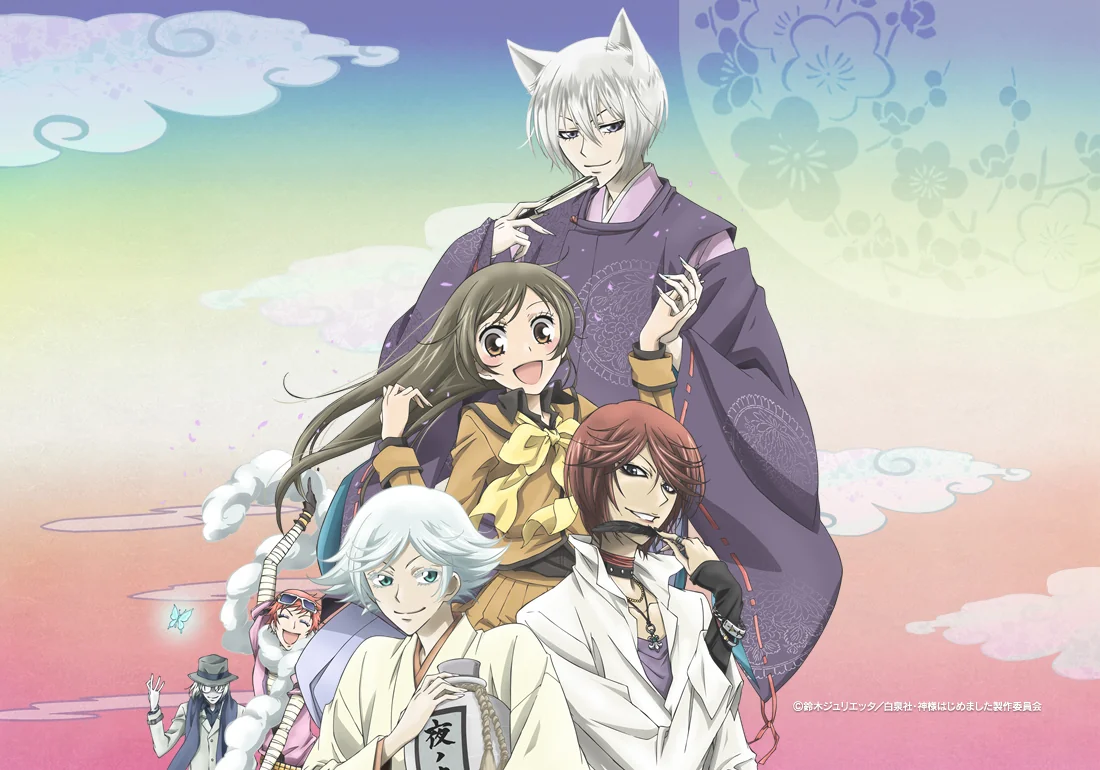
“Kamisama Kiss” features a memorable cast of characters, each with distinct personalities and motivations. Nanami Momozono is portrayed as determined, compassionate, and resilient, despite her initial insecurities. Throughout the series, Nanami evolves from an ordinary girl into a capable deity who earns the respect of those around her.
Tomoe, the fox familiar, undergoes significant character development as his feelings towards Nanami gradually shift from animosity to affection. His complex backstory and internal struggles add depth to his relationship with Nanami, forming the emotional core of the series.
The supporting characters, including the shrine spirits Mizuki and Kurama, and Nanami’s classmates and rivals, contribute to the manga’s supernatural beings and human interactions.
Julietta Suzuki’s artwork in “Kamisama Kiss” is visually appealing and complements the manga’s whimsical and supernatural themes. The character designs are expressive, with detailed illustrations that convey emotions effectively. Suzuki’s use of traditional Japanese aesthetics and folklore elements enhances the manga’s mystical atmosphere.
At its heart, “Kamisama Kiss” explores themes of identity, duty, and the power of love. Nanami’s journey as a deity mirrors her personal growth and self-discovery, as she learns to embrace her newfound responsibilities and confront her fears. The manga also goes into the complexities of relationships and the importance of acceptance and forgiveness.
The supernatural elements of the story, including Japanese mythology and folklore, enrich the narrative and provide a unique backdrop for the characters’ development.
“Kamisama Kiss” received positive reviews from critics and fans alike for its engaging storyline, well-developed characters, and romantic tension. The manga’s blend of supernatural fantasy and romance grabbed readers, making it a popular choice in the shojo genre.
The series was adapted into two anime seasons, further expanding its fanbase. The anime adaptation successfully captured the charm of the manga, bringing the characters and their adventures to life on screen.
Kamisama Kiss” is a delightful manga that appeals to fans of supernatural romance and fantasy. Its endearing characters, magical premise, and heartfelt storytelling make it a compelling read for manga enthusiasts of all ages.
Whether you’re drawn to Nanami’s journey as a deity or intrigued by the evolving relationship between Nanami and Tomoe, “Kamisama Kiss” offers a nice and enchanting experience that will leave readers longing for more.
6. Maid Sama
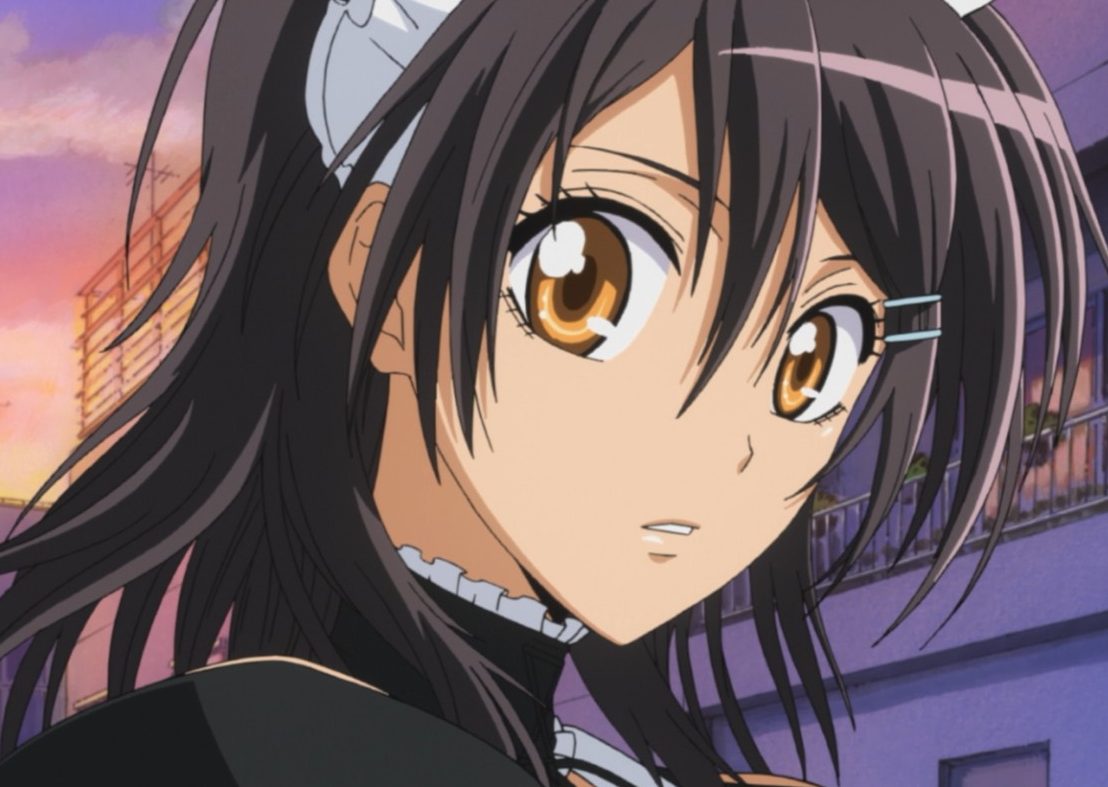
This charming shoujo anime effortlessly blends romance and comedy, revolving around Misaki Ayuzawa, a determined high school student council president who leads a double life by secretly working at a maid café to support her family.
However, her carefully constructed world is shaken when Takumi Usui, a popular and talented student, stumbles upon her secret part-time job.
What ensues is a delightful dance of amusement and romance between the initially adversarial Misaki and the intrigued Takumi. Maid Sama! is celebrated for its engaging characters and heartwarming moments, skillfully capturing the trials of adolescence and the complexities of first love.
While it may seem like a typical opposites attract narrative on the surface, the series distinguishes itself with its well-rounded characters.
Witnessing the determined Misaki gradually lower her defenses in the presence of the playful yet dependable Takumi is what sets Maid Sama! apart as a standout shoujo anime series.
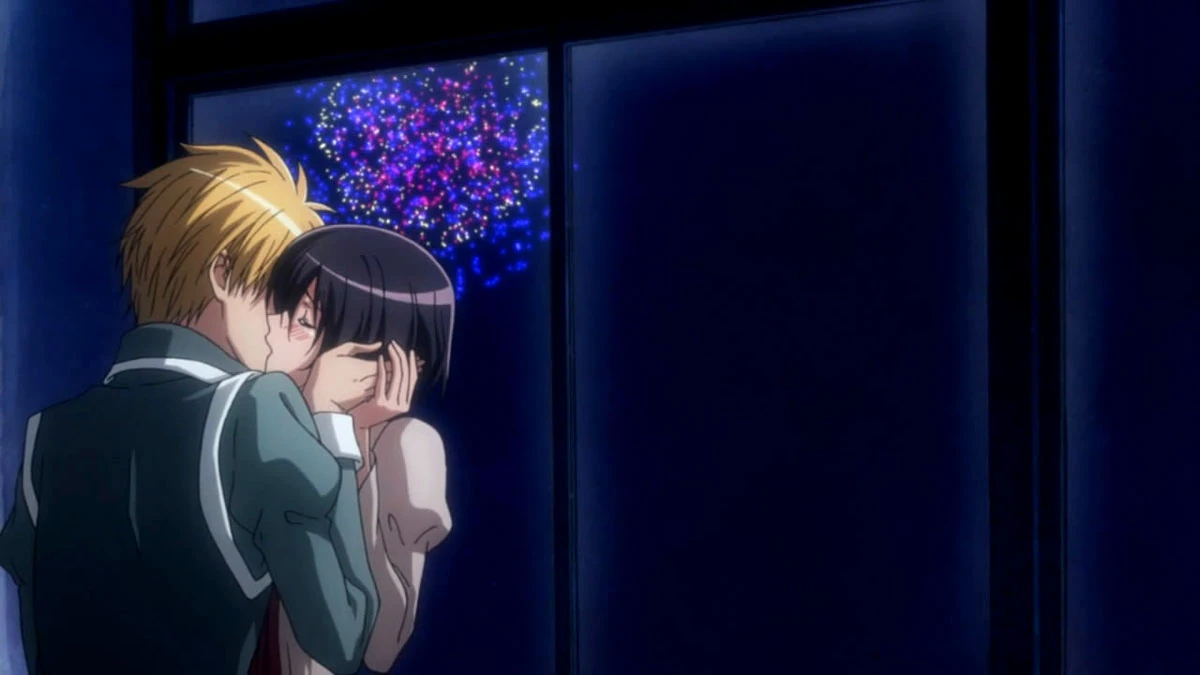
“Maid Sama!” (Kaichou wa Maid-sama!) is a popular romantic comedy manga series written and illustrated by Hiro Fujiwara. Serialized in Hakusensha’s LaLa magazine from 2005 to 2013, the series comprises 18 tankōbon volumes. “Maid Sama!” gained a dedicated fanbase for its engaging storyline, endearing characters, and delightful humor.
The story is set in Seika High School, which was once an all-boys school notorious for its rowdy students. Misaki Ayuzawa, the strict and determined student council president, strives to reform the school and create a safe environment for the female students who are now attending. Unbeknownst to her peers, Misaki works part-time as a maid at a maid café to support her family financially.
Misaki’s secret is accidentally discovered by Takumi Usui, a popular and enigmatic boy at school who seems to excel in everything effortlessly. Rather than expose her secret, Takumi chooses to keep it to himself and begins to tease and flirt with Misaki.
As Misaki and Takumi’s interactions continue, Misaki finds herself drawn to Takumi’s mysterious charm, while Takumi becomes increasingly intrigued by Misaki’s determination and strong sense of justice. Together, they navigate the complexities of high school life, friendship, and budding romance.
“Maid Sama!” features a compelling cast of characters, each with distinct personalities and motivations. Misaki Ayuzawa is portrayed as a capable and independent young woman with a tough exterior, masking her compassionate nature underneath. Throughout the series, Misaki’s character undergoes growth as she confronts her vulnerabilities and learns to accept help from others.
Takumi Usui, the male lead, is depicted as aloof and playful, yet perceptive of Misaki’s true feelings. His mysterious background and hidden depths add intrigue to his character, making him a romantic interest.
The supporting characters, including Misaki’s friends from the student council—like the energetic Suzuna and the level-headed Shizuko—and the various students at Seika High, contribute to the manga’s lively and humorous atmosphere.
Hiro Fujiwara’s artwork in “Maid Sama!” is clean, expressive, and well-suited to the romantic comedy genre. The character designs are attractive, with detailed illustrations that convey emotions effectively. Fujiwara’s comedic timing and use of chibi-style humor add to the manga’s charm and comedic appeal.
At its core, “Maid Sama!” explores themes of identity, acceptance, and the complexities of relationships. Misaki’s journey as a student council president and part-time maid reflects her determination to overcome societal expectations and pursue her goals. The manga also goes into the dynamics of friendship, trust, and the transformative power of love.
“Maid Sama!” received positive reviews for its engaging storyline, likable characters, and romantic tension. The manga’s blend of humor, romance, and slice-of-life elements resonated with readers, making it a beloved series in the shojo genre.
The series was adapted into a 26-episode anime in 2010, further expanding its popularity. The anime adaptation successfully captured the essence of the manga, bringing Misaki and Takumi’s relationship to life with vibrant animation and voice acting.
Maid Sama! is a delightful manga that appeals to fans of romantic comedies and high school dramas. Its endearing characters, playful humor, and heartfelt storytelling make it a nice read for manga enthusiasts of all ages.
Whether you’re charmed by Misaki’s determination or intrigued by the evolving relationship between Misaki and Takumi, “Maid Sama!” offers an enjoyable and entertaining experience that leaves a lasting impression.
5. Ao Haru Ride
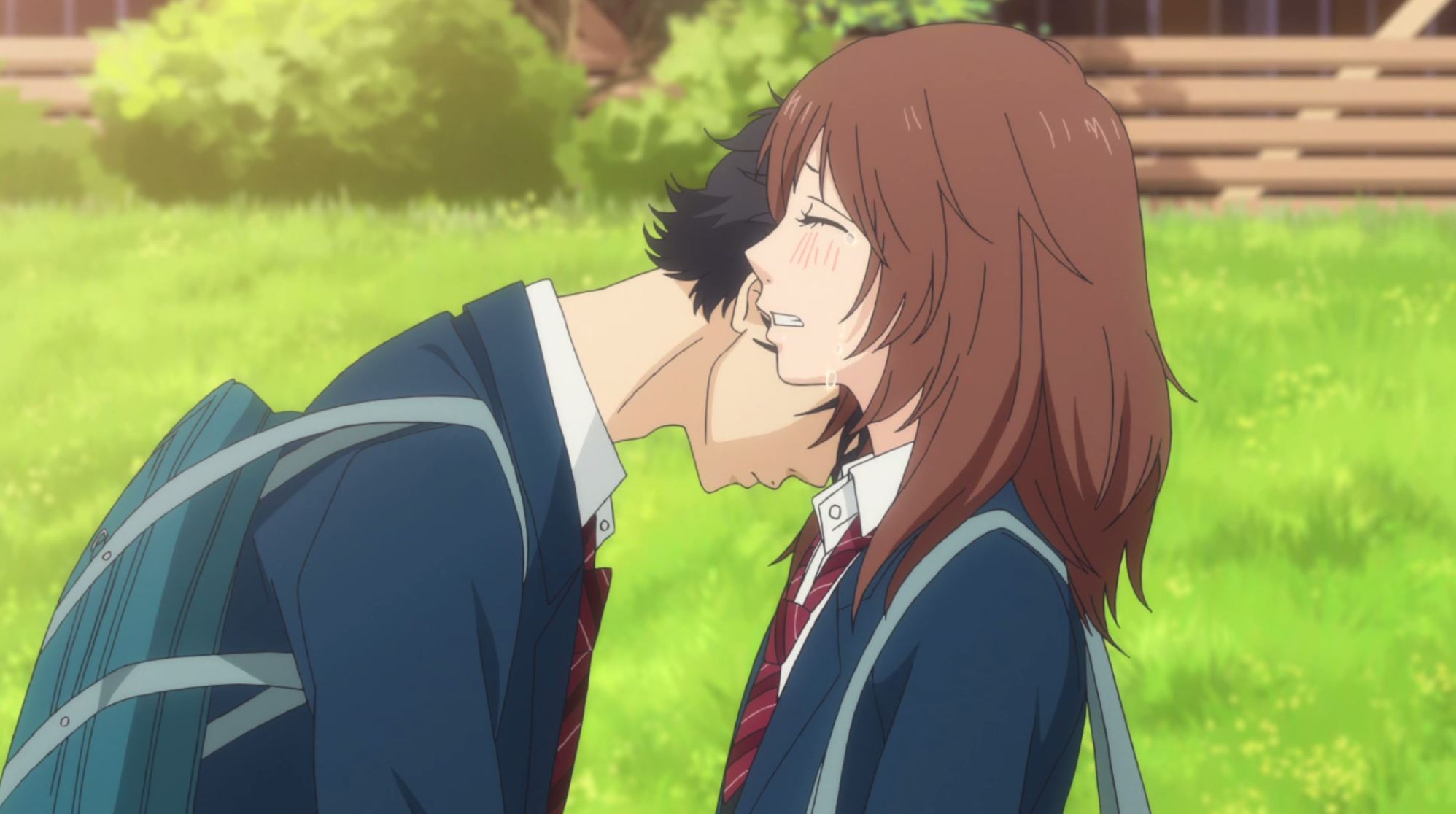
In Ao Haru Ride, Yoshioka Futaba’s first love in middle school was the kind-hearted Tanaka Kou, but a misunderstanding drove them apart. Now, as they enter high school, Futaba is shocked to find Kou transformed into a distant and reserved person.
However, fate intervenes when they are assigned as reluctant desk partners, granting them a second chance at connection.
This anime looks into the theme of unfinished young romances finding closure years later. Futaba grapples with Kou’s drastic personality change while also confronting her own insecurities and shyness.
As they navigate the complexities of their rekindled relationship and confront the lingering pains of their past, Ao Haru Ride presents a messy yet deeply meaningful portrayal of youth and love.
“Ao Haru Ride” (also known as “Blue Spring Ride”) is a sweet romantic manga series written and illustrated by Io Sakisaka. The series was serialized in Bessatsu Margaret magazine from 2011 to 2015 and compiled into 13 tankōbon volumes. “Ao Haru Ride” gained popularity for its heartfelt storytelling, relatable characters, and poignant exploration of youth, friendship, and love.
The story centers around Futaba Yoshioka, a high school girl who used to be outgoing and popular in middle school until an incident caused her to change her behavior to avoid being ostracized by her female peers. Now in high school, Futaba presents herself as reserved and indifferent to romance, despite secretly longing for the companionship and acceptance she once enjoyed.
Futaba’s life takes an unexpected turn when she reunites with Kou Mabuchi, a close friend from middle school who suddenly disappeared without explanation. Kou, now aloof and distant, captures Futaba’s attention and rekindles her feelings from the past. As Futaba navigates her complicated emotions, she discovers that Kou has also undergone personal struggles and transformation since their separation.
Together, Futaba and Kou confront their pasts, navigate the complexities of teenage relationships, and grapple with the challenges of self-discovery and forgiveness. As their bond deepens, they learn to confront their vulnerabilities and embrace the uncertainties of young adulthood.

“Ao Haru Ride” features a well-developed cast of characters, each with distinctive personalities and emotional depth. Futaba Yoshioka is portrayed as earnest and compassionate, grappling with her desire for acceptance and self-acceptance. Throughout the series, Futaba’s character evolves as she learns to express her true feelings and forge genuine connections with others.
Kou Mabuchi, the male lead, is enigmatic and introspective, harboring inner conflicts and unresolved emotions. His complex personality and internal struggles add depth to his relationship with Futaba, making their interactions poignant and compelling.
The supporting characters, including Futaba’s friends—like the cheerful Yuri and the blunt Aya—and Kou’s childhood friend, the perceptive and supportive Toma, contribute to the manga’s narrative by providing insights and emotional support to the main characters.
Io Sakisaka’s artwork in “Ao Haru Ride” is visually appealing and expressive, capturing the emotional nuances of the characters’ relationships and inner conflicts.
The character designs are attractive and well-detailed, conveying subtle emotions and interactions effectively. Sakisaka’s use of soft lines and delicate shading enhances the manga’s romantic atmosphere and emotional depth.
At its core, “Ao Haru Ride” explores themes of adolescence, identity, and the complexity of emotions. The manga goes into the challenges of self-discovery, forgiveness, and personal growth, highlighting the importance of honesty and communication in relationships.
The series also addresses the impact of past experiences on present relationships and emphasizes the transformative power of love and acceptance. Through Futaba and Kou’s journey, “Ao Haru Ride” offers insights into the dynamics of friendship, heartbreak, and resilience.
“Ao Haru Ride” received positive reviews from readers and critics for its engaging storyline, well-rounded characters, and emotive artwork. The manga’s blend of romance, drama, and coming-of-age themes resonated with audiences, making it a beloved series in the shojo genre.
The series was adapted into a 12-episode anime in 2014, further expanding its popularity. The anime adaptation faithfully captures the emotional depth and romantic tension of the manga, bringing the characters and their struggles to life on screen.
Ao Haru Ride is a poignant and heartfelt manga that appeals to fans of romance and slice-of-life stories. Its relatable characters, emotional storytelling, and beautiful artwork make it a nice read for manga enthusiasts of all ages.
Whether you’re drawn to Futaba’s journey of self-discovery or touched by the evolving relationship between Futaba and Kou, “Ao Haru Ride” offers a compelling and memorable exploration of youth, love, and resilience.
4. Sailor Moon

This anime ignited a global phenomenon and set the standard for many tropes within the mahou shoujo anime genre. It follows the journey of Usagi Tsukino, who evolves from a playful junior high student into the valiant defender of justice known as Sailor Moon.
Alongside a group of fellow Sailor Scouts, she harnesses planetary-based powers to combat villains while on a quest to locate the Legendary Silver Crystal and find her destined love.
Despite its formulaic monster-of-the-day structure, noticeable ’90s animation shortcuts, and repetitive storyline, Sailor Moon fascinated audiences with the heartfelt camaraderie and diversity of its female team. Their unwavering loyalty and compassion serve as an enduring testament to the strength of sisterhood.
Spanning over 200 episodes across various iterations, Sailor Moon solidified its status as both an anime classic and a symbol of female empowerment. Its fascinating characters and emphasis on themes of friendship and redemption elevated it to the status of a feminist icon, resonating with audiences worldwide.
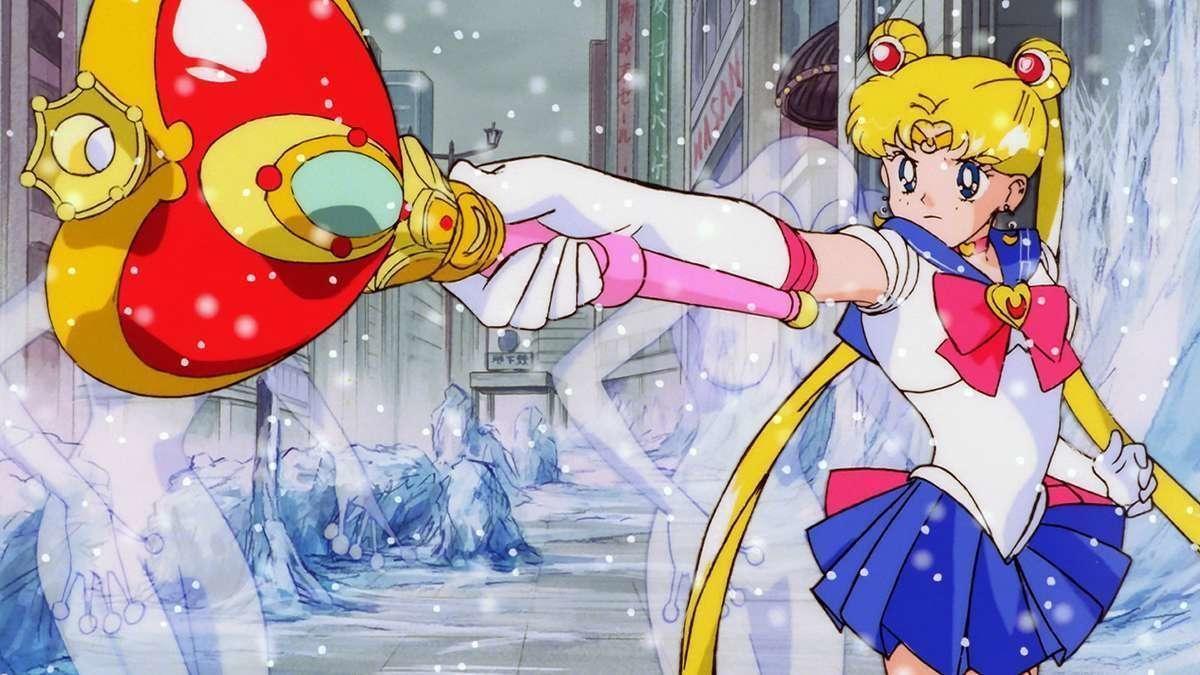
“Sailor Moon,” also known as “Pretty Guardian Sailor Moon” (美少女戦士セーラームーン, Bishoujo Senshi Sailor Moon), is a seminal Japanese manga series written and illustrated by Naoko Takeuchi. It was originally serialized in Kodansha’s Nakayoshi magazine from 1991 to 1997 and collected in 18 tankōbon volumes. The manga’s immense popularity spurred a multimedia franchise that includes an anime adaptation, movies, live-action series, musicals, and merchandise, cementing its status as a cultural phenomenon.
The narrative of “Sailor Moon” revolves around Usagi Tsukino, a clumsy, kind-hearted, and cheerful 14-year-old girl. Her life changes dramatically when she encounters a talking black cat named Luna, who reveals that Usagi is the reincarnation of Sailor Moon, a warrior destined to protect Earth from evil forces. Luna gives Usagi a magical brooch that allows her to transform into Sailor Moon, tasked with finding and protecting the Legendary Silver Crystal and locating the other Sailor Guardians.
As Sailor Moon, Usagi battles various enemies while seeking the other Sailor Guardians—each representing a planet and possessing unique powers. These guardians include:
Ami Mizuno / Sailor Mercury: The intelligent and studious guardian of water and wisdom.
Rei Hino / Sailor Mars: The fiery and spiritual shrine maiden.
Makoto Kino / Sailor Jupiter: The strong and caring guardian of thunder and courage.
Minako Aino / Sailor Venus: The charismatic and love-powered guardian.
Together, they form a team to fight the Dark Kingdom, led by Queen Beryl, who seeks to obtain the Silver Crystal for her own nefarious purposes. As the story progresses, Usagi learns about her past life as Princess Serenity of the Moon Kingdom and her destined love with Prince Endymion, now reincarnated as Mamoru Chiba (Tuxedo Mask).
Major Story Arcs:
1. Kingdom Arc: Sailor Moon and her team battle Queen Beryl and the Dark Kingdom to protect the Silver Crystal and the Earth.
2. Black Moon Arc: The Sailor Guardians confront the Black Moon Clan, who aim to rewrite history by traveling from the future.
3. Infinity Arc: They face the Death Busters, who plan to bring destruction to the world using alien forces.
4. **Dream Arc:** The group encounters the Dead Moon Circus, which seeks to release the dark powers of the moon.
5. Stars Arc: In the final arc, Sailor Moon and her allies battle the Shadow Galactica, who aim to steal the star seeds of all Sailor Guardians to control the galaxy.
Sailor Moon excels in character development, presenting a diverse cast with distinct personalities and growth arcs:
Naoko Takeuchi’s artwork in “Sailor Moon” is characterized by its elegant and detailed style. The character designs are iconic, with each Sailor Guardian sporting distinctive and memorable costumes.
The transformation sequences and battle scenes are beautifully illustrated, contributing to the series’ magical and dynamic feel. Takeuchi’s use of intricate backgrounds and expressive facial expressions enhances the emotional depth of the story.
“Sailor Moon” explores themes of love, friendship, and the battle between good and evil. It emphasizes the importance of inner strength, self-acceptance, and the power of unity. The series also goes into themes of reincarnation, destiny, and the enduring nature of love. The strong bonds among the Sailor Guardians highlight the value of teamwork and mutual support in overcoming challenges.
“Sailor Moon” received widespread acclaim for its compelling narrative, well-rounded characters, and beautiful artwork. It is credited with popularizing the magical girl genre and has inspired numerous other works in manga and anime. The series’ positive portrayal of female empowerment, diverse characters, and its ability to address serious themes while remaining accessible and entertaining have resonated with audiences worldwide.
The anime adaptation, which aired from 1992 to 1997, further amplified the series’ popularity. The anime, known for its catchy theme songs and vibrant animation, brought the characters and story to life, creating a global fanbase.
Critics and fans have praised “Sailor Moon” for its progressive representation of gender and sexuality, particularly in its depiction of same-sex relationships and gender nonconformity. The series’ influence extends beyond entertainment, impacting fashion, pop culture, and even social movements.
Sailor Moon is a timeless and influential manga that continues to grab readers and viewers with its magical blend of fantasy, romance, and adventure. Its strong, relatable characters, compelling themes, and beautiful artwork make it a must-read for fans of the magical girl genre and beyond.
Whether you are drawn to Usagi’s journey of self-discovery or the epic battles against evil, “Sailor Moon” offers a rich and rewarding experience that has left an indelible mark on popular culture.
3. Fruits Basket
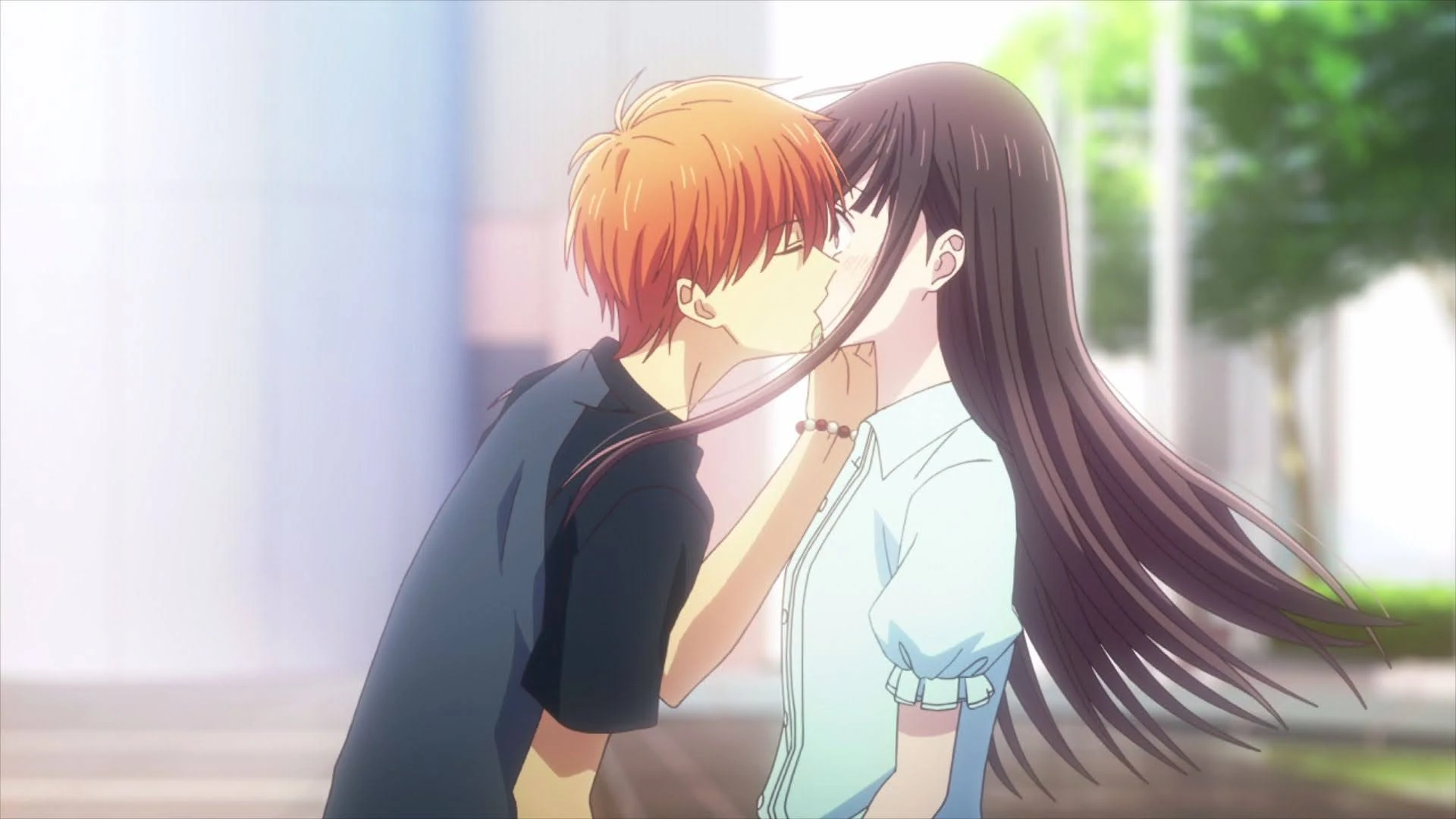
Natsuki Takaya’s beloved masterpiece, Fruits Basket, revolves around Tohru Honda, a high school orphan who finds herself living in a tent in the forest after her grandfather’s home undergoes renovation.
However, her life takes a sudden turn when Yuki Sohma and Shigure Sohma stumble upon her situation and extend an invitation for her to stay with them in exchange for help around the house.
Thus begins Tohru’s journey into the enigmatic world of the Sohma family, who are afflicted with a mysterious curse that transforms twelve members into animals from the Chinese zodiac when embraced by someone of the opposite gender.
Embraced by the warmth of the Sohma household, compassionate Tohru resolves to break the generational curse through the power of love, empathy, and acceptance.

With its charming characters, supernatural elements, and poignant themes of belonging, understanding, and forgiveness, Fruits Basket has earned its place as a timeless manga classic. Its enduring popularity led to the creation of two anime adaptations, fascinating audiences with its heartfelt storytelling and exploration of the bonds of found family.
“Fruits Basket” (フルーツバスケット, Furūtsu Basuketto) is a beloved Japanese manga series written and illustrated by Natsuki Takaya. It was originally serialized in Hakusensha’s semi-monthly Japanese shōjo manga magazine Hana to Yume from 1998 to 2006.
The series was compiled into 23 tankōbon volumes. “Fruits Basket” is widely acclaimed for its deep character development, emotional depth, and a blend of romance, drama, and supernatural elements.
The story centers around Tohru Honda, a kind and optimistic high school girl who becomes orphaned after her mother dies in a car accident. Initially living in a tent, Tohru’s life takes an unexpected turn when she is invited to stay with her classmate Yuki Sohma and his relatives, Shigure and Kyo Sohma.
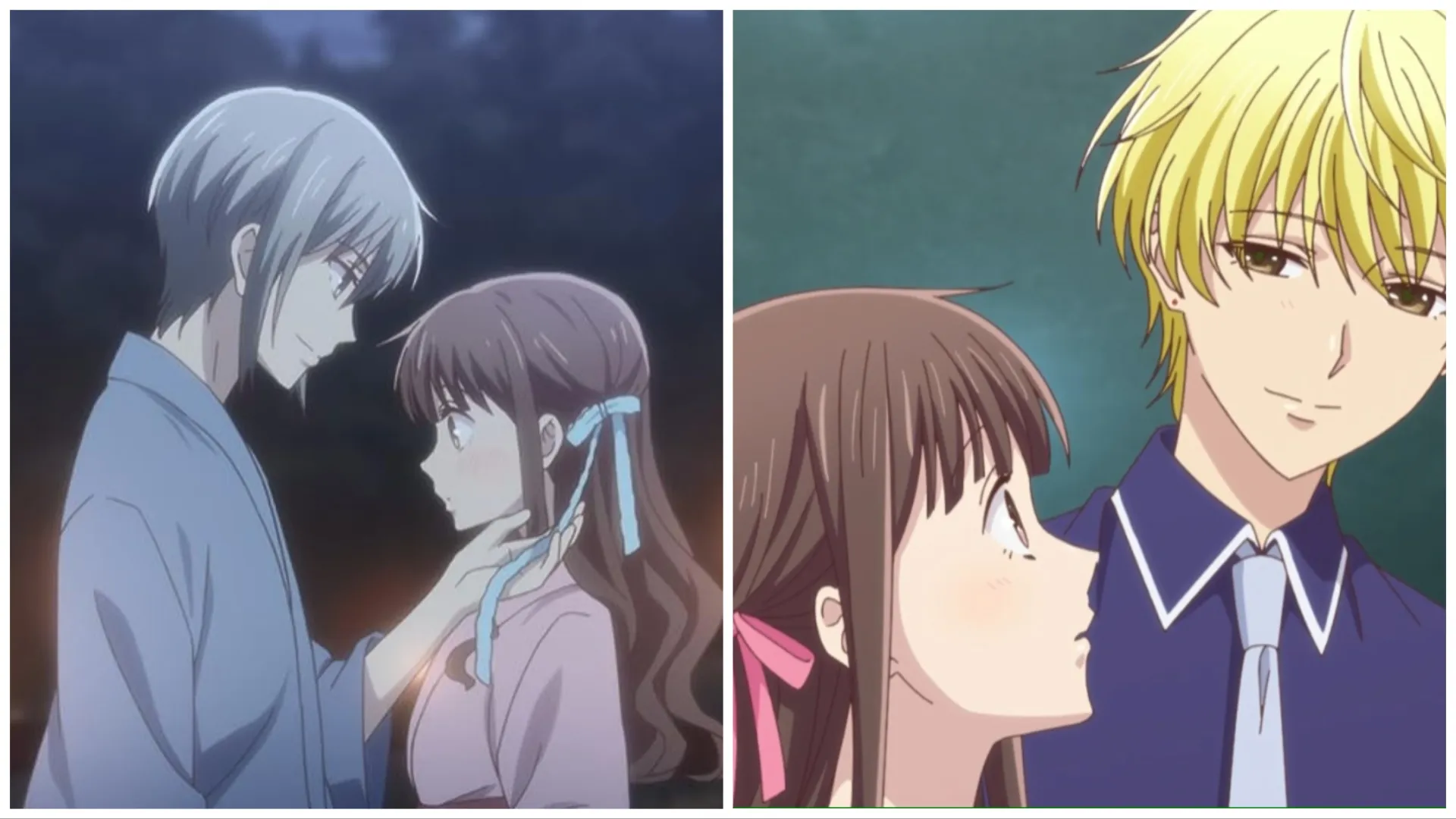
Tohru soon discovers the Sohma family’s dark secret: thirteen members of the family are cursed to transform into animals of the Chinese Zodiac (plus the cat) when they are weak, stressed, or embraced by someone of the opposite sex. Despite this strange curse, Tohru accepts them without judgment and begins to form close bonds with the Sohma family members, offering her unwavering support and compassion.
As the series progresses, Tohru learns about the individual struggles and traumas of the Sohma family members, particularly their complicated relationships with the family head, Akito Sohma, who wields a tyrannical control over them. Tohru’s journey becomes not only about understanding the curse but also about healing the emotional wounds of those around her and finding her own place in the world.
Characterization:
“Fruits Basket” is renowned for its rich character development, with each character undergoing significant growth throughout the series. Key characters include:
Tohru Honda: The protagonist, is known for her kindness, optimism, and resilience. Tohru’s selflessness and empathy make her a catalyst for positive change within the Sohma family.
Yuki Sohma: The “Prince” of the school and the Rat of the Zodiac, Yuki is outwardly charming but internally struggles with feelings of isolation and inadequacy.
Kyo Sohma: The Cat of the Zodiac, Kyo is hot-headed and rebellious, harboring deep-seated anger and self-loathing due to his outcast status within the family.
Shigure Sohma: The Dog of the Zodiac, Shigure is a writer with a playful and sometimes manipulative personality, hiding his true intentions and emotional depth.
Akito Sohma: The head of the Sohma family and the main antagonist, Akito exerts control over the Zodiac members, using fear and psychological manipulation.
Other notable characters include the other Zodiac members like Hatori (the Dragon), Ayame (the Snake), and Momiji (the Rabbit), each with their unique backstories and emotional struggles.
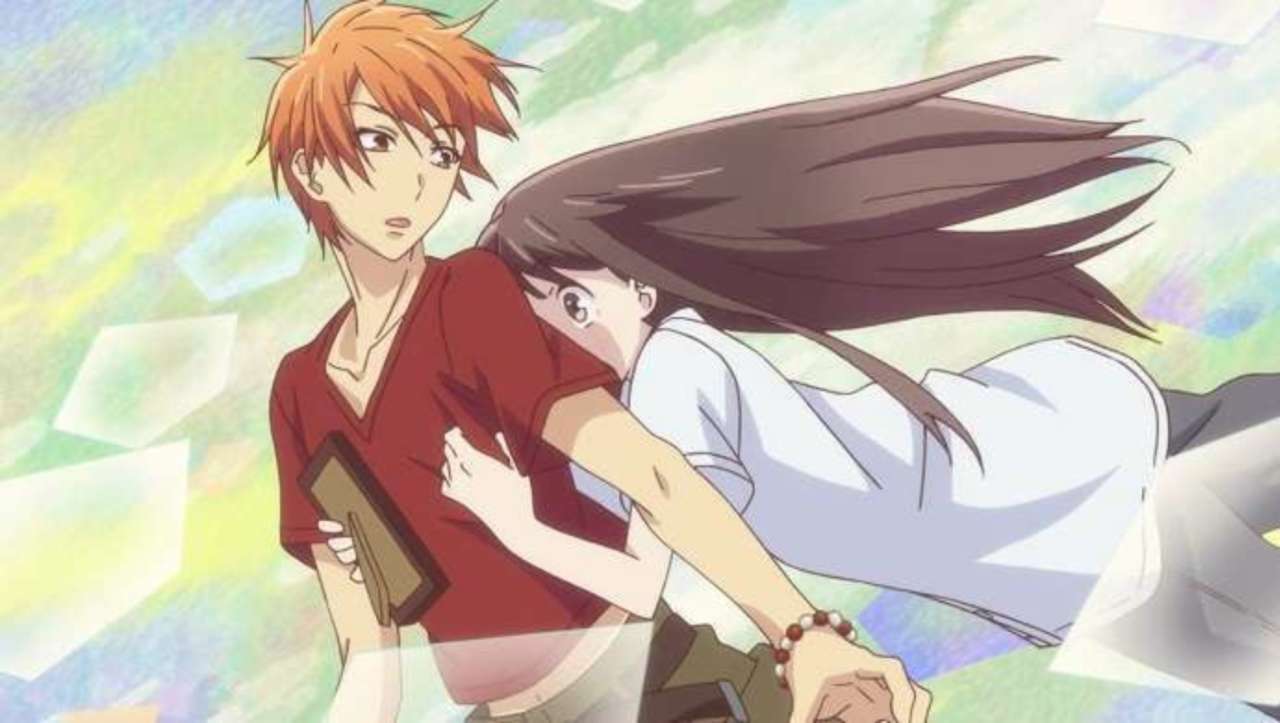
Natsuki Takaya’s artwork evolves significantly over the course of the series. The early volumes feature simpler character designs and layouts, which become more refined and detailed as the story progresses.
Takaya’s ability to convey emotions through expressive character faces and body language enhances the narrative’s emotional impact. The use of symbolic imagery and the incorporation of elements from Japanese folklore and astrology add depth to the visual storytelling.
“Fruits Basket” explores a variety of profound themes, including acceptance, healing, and the impact of trauma. The series goes into the complexities of family dynamics, love, and personal growth. It emphasizes the importance of understanding and accepting oneself and others, and the transformative power of empathy and kindness.
One of the central themes is the struggle for identity and self-worth. Each Zodiac member grapples with their curse and the resulting societal and familial expectations. Tohru’s influence helps them confront their fears, accept their true selves, and find the courage to break free from their past.
“Fruits Basket” received widespread acclaim for its compelling storytelling, multidimensional characters, and emotional resonance. Readers and critics praised the series for its ability to tackle serious issues such as abuse, mental health, and self-acceptance with sensitivity and depth.
The manga’s success led to two anime adaptations. The first, produced by Studio DEEN, aired in 2001 and covered the early part of the manga. The second adaptation, produced by TMS Entertainment, aired from 2019 to 2021, offering a more faithful and complete adaptation of the entire manga.
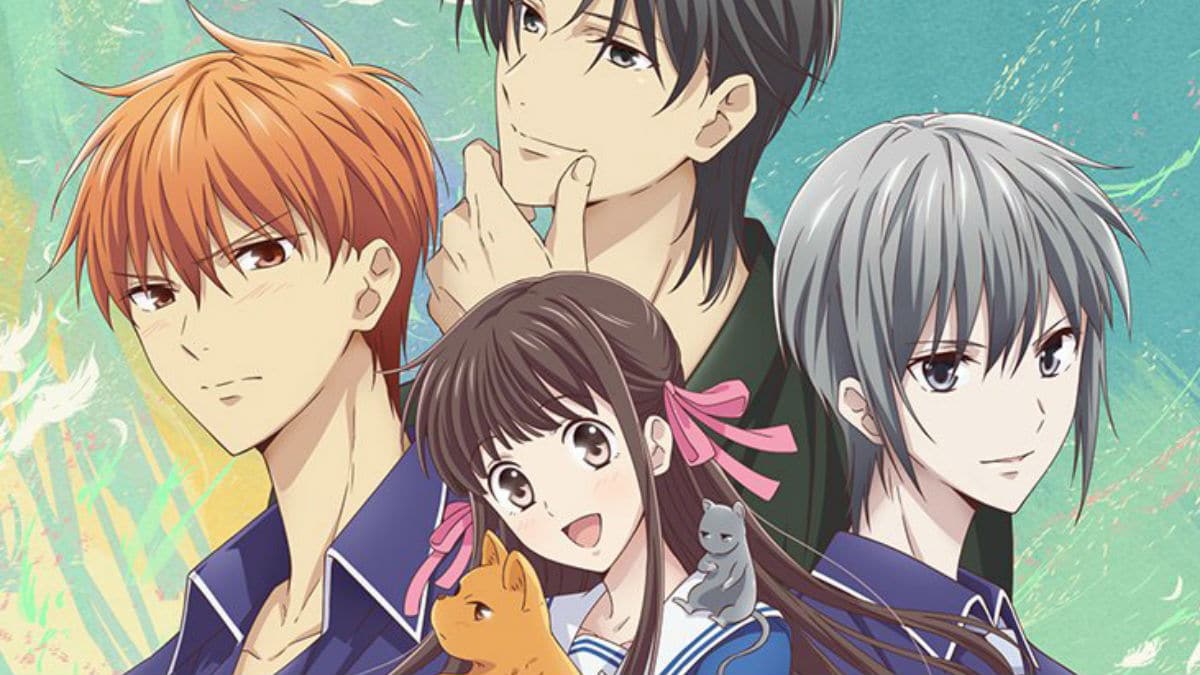
The 2019-2021 anime adaptation was particularly well-received for its beautiful animation, faithful adherence to the source material, and its ability to capture the emotional essence of the story. This adaptation introduced “Fruits Basket” to a new generation of fans while satisfying longtime followers of the manga.
“Fruits Basket” is a timeless and deeply moving series that transcends the typical boundaries of the shōjo genre. Its rich character development, emotional storytelling, and exploration of profound themes make it a must-read for manga enthusiasts.
Whether you’re drawn to the heartwarming journey of Tohru Honda, the complex dynamics of the Sohma family, or the universal themes of love and acceptance, “Fruits Basket” offers a rich and rewarding experience that resonates long after the final page is turned.
2. Ouran High School Host Club

At Ouran Academy, a prestigious institution for the ultra-wealthy, the status quo is turned upside down when the pragmatic and intelligent commoner Haruhi accidentally shatters a costly vase. In order to repay her debt, she masquerades as a boy and joins the school’s eccentric Host Club, entertaining female clients with her charm and wit.
Filled with reverse harem antics, larger-than-life characters, and playful parodies of traditional shojo tropes, Ouran High School Host Club quickly soared to popularity.
However, beyond its slapstick humor, the series also offers subtle nods to social commentary on issues like gender, class, and prejudice. Amidst the laughter and chaos, romance blossoms as Haruhi finds herself at the center of affection from multiple dashing hosts.
“Ouran High School Host Club” (桜蘭高校ホスト部, Ōran Kōkō Hosuto Kurabu) is a popular Japanese manga series written and illustrated by Bisco Hatori. Serialized in Hakusensha’s LaLa magazine from 2002 to 2010, the series was collected into 18 tankōbon volumes. The manga’s unique blend of comedy, romance, and satire of high school tropes garnered widespread acclaim and led to various adaptations, including a well-loved anime series.
The story is set in the prestigious Ouran Academy, a high school for wealthy students. The plot centers around Haruhi Fujioka, a scholarship student from a modest background who enrolls in Ouran Academy. One day, while searching for a quiet place to study, Haruhi stumbles upon the school’s Host Club—a group of attractive male students who entertain female clients with tea and conversation.
Mistakenly thought to be a boy due to her short hair and androgynous appearance, Haruhi accidentally breaks an expensive vase worth 8 million yen (about $80,000). To repay the debt, she is forced to work for the Host Club, posing as a male host. The club members include:
- Tamaki Suoh: The charming and flamboyant president of the Host Club, often referred to as “King.” He is half-French and half-Japanese and is known for his dramatic personality and obsession with creating a welcoming environment for the club’s guests.
- Kyoya Ootori: The calm and calculating vice-president, who handles the club’s finances and operations. He comes from a powerful family and often acts as the pragmatic foil to Tamaki’s exuberance.
- Hikaru and Kaoru Hitachiin: Mischievous identical twins who play up their closeness to appeal to clients. Despite their playful exterior, they struggle with their own individual identities.
- Mitsukuni “Honey” Haninozuka: A cute and childlike senior with a love for sweets and stuffed animals. Despite his appearance, he is a martial arts champion.
- Takashi “Mori” Morinozuka: Honey’s stoic and protective cousin, who also excels in martial arts. He is known for his silent but strong presence.
As Haruhi navigates her new role in the Host Club, she forms deep bonds with its members, each of whom has their own backstory and personal struggles. The series explores themes of friendship, identity, and the complexities of social class.

Characterization: “Ouran High School Host Club” is renowned for its rich character development and diverse cast. Each character undergoes significant growth throughout the series:
- Haruhi Fujioka: Haruhi is practical, intelligent, and straightforward. Her down-to-earth nature and lack of concern for social status make her a unique protagonist. As she becomes more integrated into the Host Club, she learns about the members’ vulnerabilities and helps them confront their issues.
- Tamaki Suoh: Tamaki’s exuberance and charm mask his insecurities and complex family background. His journey involves reconciling his identity and accepting his feelings for Haruhi.
- Kyoya Ootori: Kyoya’s aloof and calculating demeanor hides his struggle for approval within his powerful family. His friendship with Tamaki and the others helps him discover his own worth beyond family expectations.
- Hikaru and Kaoru Hitachiin: The twins’ mischievous nature belies their deep bond and fear of being separated. Haruhi’s influence helps them develop their individual identities.
- Honey and Mori: Honey and Mori’s relationship goes beyond the typical master-servant dynamic, showcasing their deep mutual respect and care. Honey learns to balance his cute exterior with his serious martial arts skills, while Mori opens up more emotionally.
Bisco Hatori’s artwork is characterized by its clean lines, expressive characters, and detailed backgrounds. The character designs are visually appealing and distinctive, with each member of the Host Club having a unique appearance that reflects their personality.
The manga effectively uses visual humor and exaggerated expressions to enhance the comedic elements, while also capturing the more emotional and dramatic moments with sensitivity and nuance.
Ouran High School Host Club” explores a variety of themes, including social class, gender identity, and the nature of family and friendship. The series critiques the superficiality of high society and the rigid expectations placed on individuals based on their social status.
One of the central themes is the fluidity of gender roles and the importance of being true to oneself. Haruhi’s nonchalant attitude towards gender norms and the club members’ acceptance of her true identity highlight the series’ progressive stance on these issues.
The series also emphasizes the value of genuine human connections. The members of the Host Club, despite their privileged backgrounds, each have their own struggles and insecurities. Through their interactions with Haruhi and each other, they learn the importance of empathy, understanding, and emotional support.
Ouran High School Host Club” received widespread acclaim for its clever writing, memorable characters, and unique blend of humor and romance. Critics and fans praised the series for its satirical take on high school and romantic tropes, as well as its heartfelt exploration of deeper themes.
The manga’s success led to a 26-episode anime adaptation produced by Bones, which aired in 2006. The anime was well-received for its vibrant animation, faithful adaptation of the manga’s story, and strong voice acting. The opening theme, “Sakura Kiss” by Chieko Kawabe, became iconic among fans.
In addition to the anime, “Ouran High School Host Club” inspired a live-action drama and a live-action film, further cementing its popularity and cultural impact.
Ouran High School Host Club” is a standout series that continues to resonate with audiences due to its engaging characters, humorous yet heartfelt storytelling, and insightful commentary on social issues.
Whether you’re drawn to Haruhi’s journey of self-discovery, the comedic antics of the Host Club, or the deeper emotional arcs of its characters, “Ouran High School Host Club” offers a rich and rewarding experience that leaves a lasting impression.
1. Kimi ni Todoke
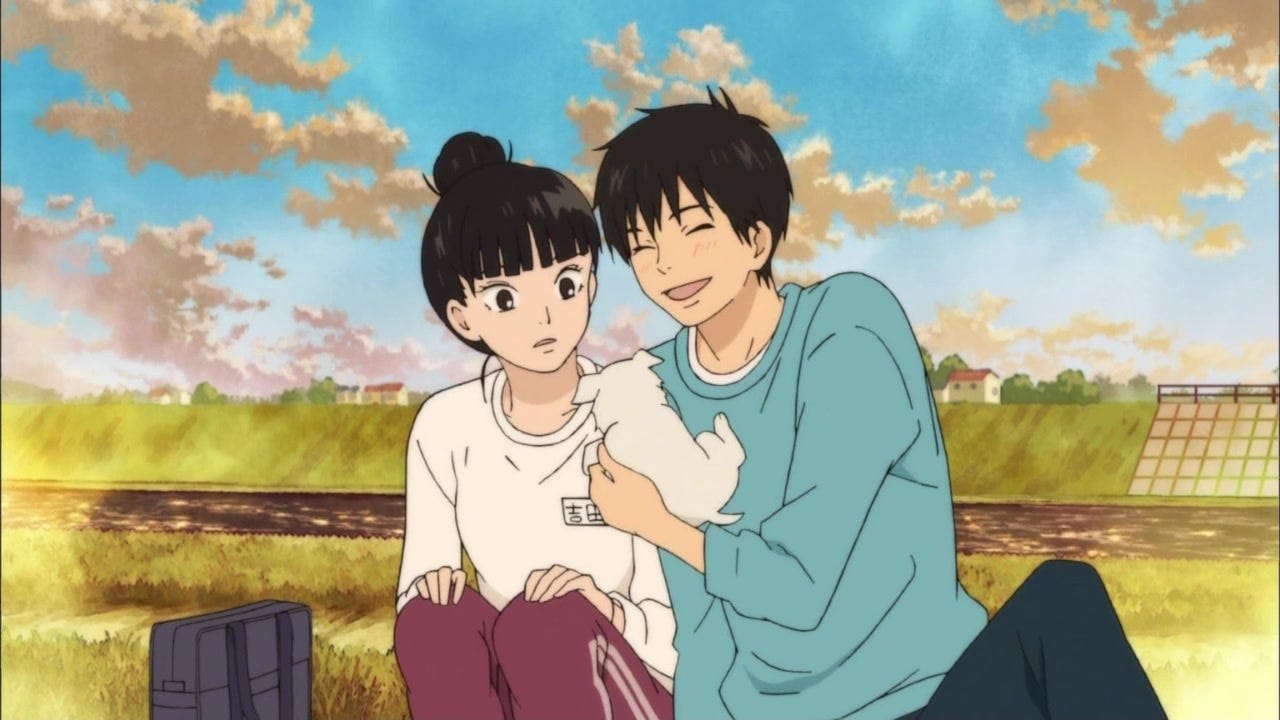
Kimi ni Todoke stands as a quintessential shoujo anime, placing high school romance under the spotlight. At its center is Sawako Kuronuma, a timid girl often misunderstood due to her resemblance to Sadako from The Ring, earning her the cold shoulder from classmates.
However, everything changes when she forms a bond with the class’s most popular boy, Shouta Kazehaya. While the premise of the shy outsider catching the eye of the school’s heartthrob may seem familiar, Kimi ni Todoke distinguishes itself with its nuanced approach to both plot and characters.
Sawako’s transformation isn’t about becoming a glamorous princess overnight; rather, she retains her modesty and awkwardness even as she grows closer to Kazehaya. He, in turn, values her for all the quirks that once made her an outcast.
Their journey from friends to lovers unfolds gracefully across two seasons, capturing the beauty and complexity of their evolving relationship with subtlety and heart.
“Kimi ni Todoke” (君に届け, “From Me to You”) is a beloved Japanese manga series written and illustrated by Karuho Shiina. Serialized in Shueisha’s Bessatsu Margaret magazine from 2005 to 2017, the series was collected into 30 tankōbon volumes. “Kimi ni Todoke” stands out in the shōjo genre for its touching story, deep character development, and exploration of themes such as acceptance, friendship, and personal growth.
The story follows Sawako Kuronuma, a high school girl who is misunderstood by her classmates due to her resemblance to Sadako, the ghostly character from the horror film “The Ring.” Her shy demeanor and awkward social skills lead to her being nicknamed “Sadako,” which further isolates her from her peers. Despite this, Sawako is a kind-hearted and gentle girl who deeply desires to make friends and be accepted by others.
Sawako’s life begins to change when she has a chance encounter with Shota Kazehaya, the most popular boy in school, known for his cheerful and outgoing personality. Unlike others, Kazehaya sees Sawako for who she truly is and is drawn to her genuine nature. He encourages her to come out of her shell and interact more with their classmates.
As Sawako gradually opens up, she forms close friendships with Ayane Yano and Chizuru Yoshida, who support and protect her. She also begins to experience the complexities of romantic feelings as she navigates her growing affection for Kazehaya.
Throughout the series, Sawako’s journey is marked by her efforts to overcome misunderstandings, build meaningful relationships, and find her place in the world. The story goes into the emotional growth of the characters, exploring themes of acceptance, empathy, and the power of genuine connections.

Characterization: “Kimi ni Todoke” is praised for its rich character development, with each character undergoing significant growth throughout the series:
- Sawako Kuronuma: The protagonist, is known for her shy and timid nature. Sawako’s journey from an isolated and misunderstood girl to a confident and accepted individual is at the heart of the series. Her kindness and sincerity gradually win over her classmates and readers alike.
- Shota Kazehaya: The popular and kind-hearted boy who befriends Sawako. Kazehaya’s unwavering support and belief in Sawako play a crucial role in her transformation. His own growth involves understanding his feelings for Sawako and facing the challenges of their relationship.
- Ayane Yano: Sawako’s mature and perceptive friend, who offers wisdom and guidance. Ayane’s character arc explores her own struggles with love and self-acceptance.
- Chizuru Yoshida: Sawako’s energetic and loyal friend, who provides emotional and physical support. Chizuru’s storyline includes dealing with unrequited love and understanding her own worth.
- Ryu Sanada: Chizuru’s childhood friend and the quiet member of their group. Ryu’s subtle but steady presence adds depth to the friendship dynamics, and his feelings for Chizuru create additional layers of tension and development.
Karuho Shiina’s artwork is characterized by its clean lines, expressive faces, and detailed backgrounds. The character designs are distinctive and convey a wide range of emotions, which enhances the storytelling.
Shiina’s ability to capture subtle expressions and body language helps convey the characters’ internal struggles and growth. The use of soft tones and careful shading adds a gentle and emotional quality to the artwork, complementing the mood of the series.
Themes and Messages: “Kimi ni Todoke” explores several profound themes, including:
- Acceptance and Understanding: The series highlights the importance of looking beyond superficial appearances and stereotypes to understand and accept individuals for who they truly are. Sawako’s transformation is a testament to the power of empathy and genuine human connection.
- Personal Growth: Sawako’s journey is one of self-discovery and growth. She learns to overcome her insecurities and embrace her strengths, inspiring others around her to do the same.
- Friendship and Support: The bonds between Sawako, Ayane, Chizuru, and Kazehaya emphasize the significance of friendship and mutual support. These relationships provide a foundation for the characters to face their challenges and grow together.
- Love and Romance: The series explores various aspects of love, from the innocent and awkward beginnings of Sawako and Kazehaya’s relationship to the more complex and mature relationships of their friends. It portrays love as a multifaceted emotion that requires understanding, patience, and growth.
“Kimi ni Todoke” has received widespread acclaim for its heartfelt storytelling, well-developed characters, and beautiful artwork. Readers and critics have praised the series for its realistic portrayal of high school life and the emotional depth of its characters. The manga’s ability to balance humor, drama, and romance has made it a standout in the shōjo genre.
The success of the manga led to several adaptations, including a 38-episode anime series produced by Production I.G, which aired from 2009 to 2011. The anime was well-received for its faithful adaptation of the manga’s story and its high-quality animation. The opening and ending themes, particularly “Kimi ni Todoke” by Tanizawa Tomofumi, became popular among fans.
In addition to the anime, “Kimi ni Todoke” was adapted into a live-action film released in 2010, which further expanded its audience. The film was praised for its casting and its ability to capture the essence of the manga.
“Kimi ni Todoke” is a timeless and deeply moving series that continues to resonate with readers due to its authentic characters, emotional storytelling, and exploration of universal themes.
Whether you’re drawn to Sawako’s journey of self-discovery, the heartwarming friendships, or the sweet romance, “Kimi ni Todoke” offers a rich and rewarding experience that leaves a lasting impression. The series’ emphasis on acceptance, empathy, and personal growth makes it a standout in the world of shōjo manga and a must-read for fans of the genre.
Memes of the Day
My Teen Romantic Comedy Snafu Too
Should I Study at Noryangjin
sauce:508404
M-lf Hunting In Another World
Under the Radar
Pixiv 115157621
Sauce: 441885
Midorisou no Maria-san | Maria-san of the Midori Dormitory [Mikami Cannon]
Sauce: HFox | 84688
Hypnotized Teacher: Sato’s Revenge [
Sauce: 464344
Iu wa Katashi Okonau wa Yasushi | Easier Done Than Said [Okyou]
Sauce: 380113
Victoria no Tabi [Ginhaha
Sauce: Shuumatsu no Harem
Mama Oshiete Ageru [Bifidus]
Melon Soda [Sumiya]
Sauce: ZUKO-114
Hitozuma Osananajimi to Hitonatsu no Dekigoto DLO-07
Hatsujou Munmun Massage! Ch. 1-2
Moshi Umibe de Ecchi na Onee-san to Deattara | If You Were to Meet A S*xy Lady at the Beach
Pixiv 112573685
Sauce – 518901
Oni Zeme! Goumou Moto Yan Do-S Mama no Itazura Musuko Choukyou [Agata]
Yarigai Sagashi | Wanting More, Wanting Bette
Tachibanachi no Dansei Jijou Matome Ban
Genkai Twins episode 1

